Let me be clear: I don't hate Welcome Tour. In fact, I found myself genuinely enjoying large chunks of it. Welcome Tour acts as a digital exhibition, presenting numerous mini-games and demonstrations that highlight the Switch 2's new features. HD Rumble 2 delivers impressively precise vibrations. The magnetic Joy-Con 2s snap together with deeply satisfying clicks. The 120Hz display capabilities genuinely impress when you see them in action.
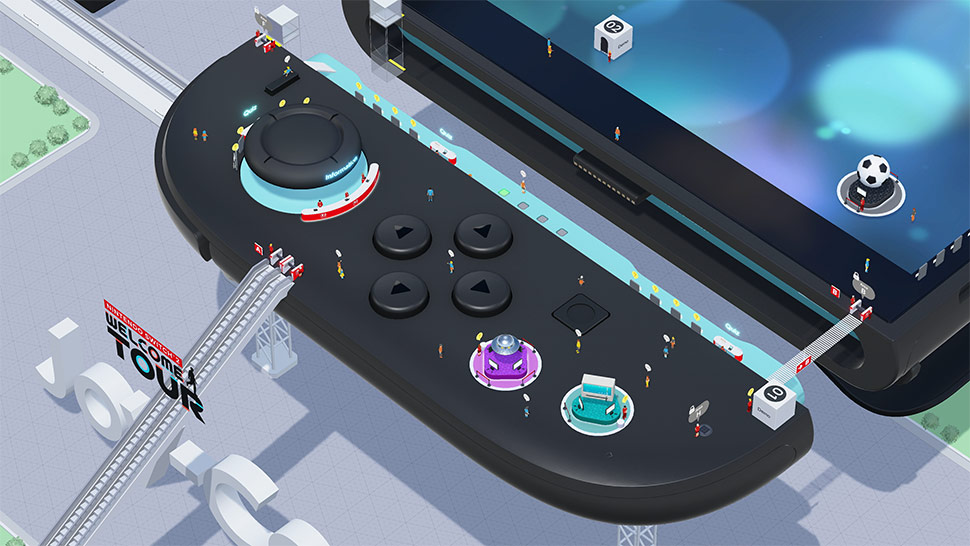
The mini-games surprised me with their depth. What starts as simple diversions gradually ramps up into legitimate challenges. Piloting a UFO through obstacles with the new Joy-Con mouse controls starts easy but becomes genuinely demanding. Successfully completing the mini-game where the strongest vibration is located, like finding the strongest rumble along a line, demands focused attention on the controller's feedback. Getting all the medals on some of these activities requires actual skill and practice.
Navigating a maze using the mouse controls presents a challenge requiring precision and speed, demonstrating the fine control offered by this new feature What's clever is how Welcome Tour teaches you that these mouse controls without needing a traditional desk setup. The included attachments let you use the Joy-Con as a mouse on whatever surface is handy. The innovative mouse control feature allows you to use the Joy-Con on a variety of surfaces, offering remarkable flexibility in gameplay. It functions decently enough for these mini-games, though I'm skeptical about playing a full-length title this way. These mini-games are more than just simple demos; they're thoughtfully crafted challenges designed to showcase the hardware's capabilities while offering genuine gameplay.
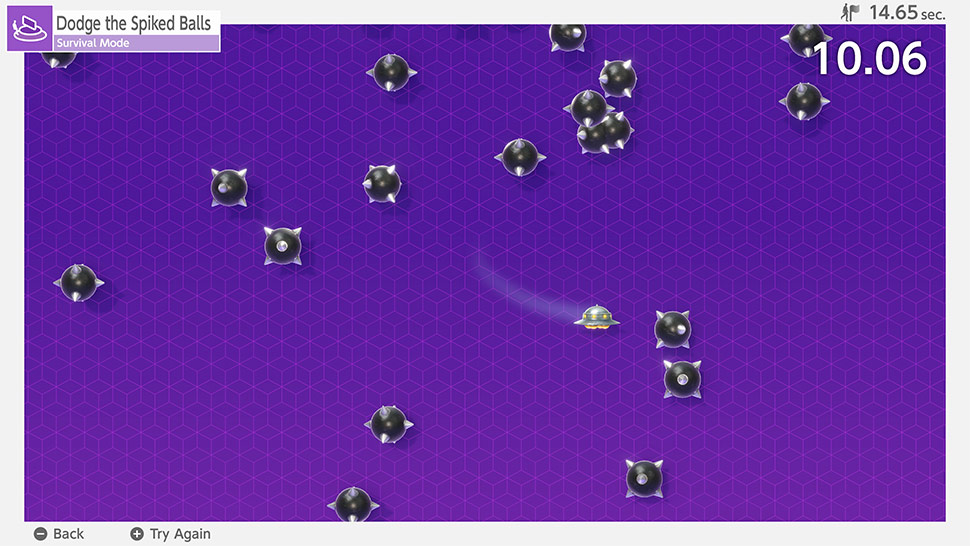
Even the educational aspects have their moments. Seeing World 1-1 from Super Mario Bros. displayed at true one-to-one pixel scale across an entire 4K screen is genuinely cool, though Nintendo inexplicably didn't include the full game. Learning about the dock's engineering proves fascinating. For instance, one rubber foot features a special plastic section designed to stay put normally but slide rather than topple if a cable gets yanked. These engineering insights make you appreciate Nintendo's attention to detail.
Not everything lands. Stamp collecting remains the worst offender. You hunt for hidden stamp locations that only appear when you're practically on top of them. Some celebrate exciting features like the magnetic connectors, while others discuss the various ports, buttons, and triggers. The mechanic tests patience more than it educates. The quizzes feel more like memory tests than actual learning opportunities, asking you to regurgitate facts you read moments earlier. There's a paint-themed activity that somehow makes using the touchscreen feel like a chore rather than a showcase.
During an extended session, I found myself surprisingly absorbed. I methodically worked through Welcome Tour's checklist, chasing three-star ratings and uncovering every secret. The completionist structure can be oddly satisfying when you dedicate focused time to it. Each medal earned and challenge completed feeds into that "just one more" mentality.

But this is fundamentally a one-time experience. Unlike proper games, nothing here warrants revisiting once you've seen everything. The activities that seemed engaging during that initial playthrough feel thin when competing with actual Switch 2 games for your attention.
The real issue isn't quality; it's principle. Sony bundled Astro's Playroom with every PS5, treating it as a celebration and thank-you to early adopters. Nintendo's decision to charge for Welcome Tour, especially given the Switch 2's high price point, feels like a missed opportunity for goodwill. This is exactly the kind of thing that should have been a "thanks for buying our new console" gesture.
Some content requires additional accessories. You'll need the camera for certain demos. Either a Pro Controller 2 or Joy-Con 2 Charging Grip unlocks other activities. While slightly annoying to see locked content, the approach makes sense. Why demonstrate features for hardware you don't own?
Simply Put
Nintendo Switch 2 Welcome Tour is actually not bad. It's polished, occasionally challenging, and does an admirable job showcasing what makes the Switch 2 special. As interactive instruction manuals go, this is probably the gold standard. But that $10 price tag transforms what should have been a delightful bonus into a questionable purchase. After dropping $450 on the console itself, being asked to pay extra for the privilege of learning what it can do still stings.
For Nintendo diehards or anyone genuinely curious about their new hardware's capabilities, Welcome Tour delivers enough charm and substance to justify a few hours of your time. Everyone else should save their $10 for actual games, and that’s not a knock on the talented team that developed the package. Nintendo delivered a solid, enjoyable tech showcase. I can easily see this become an added bonus to either of the tiers of Nintendo Switch Online.
]]>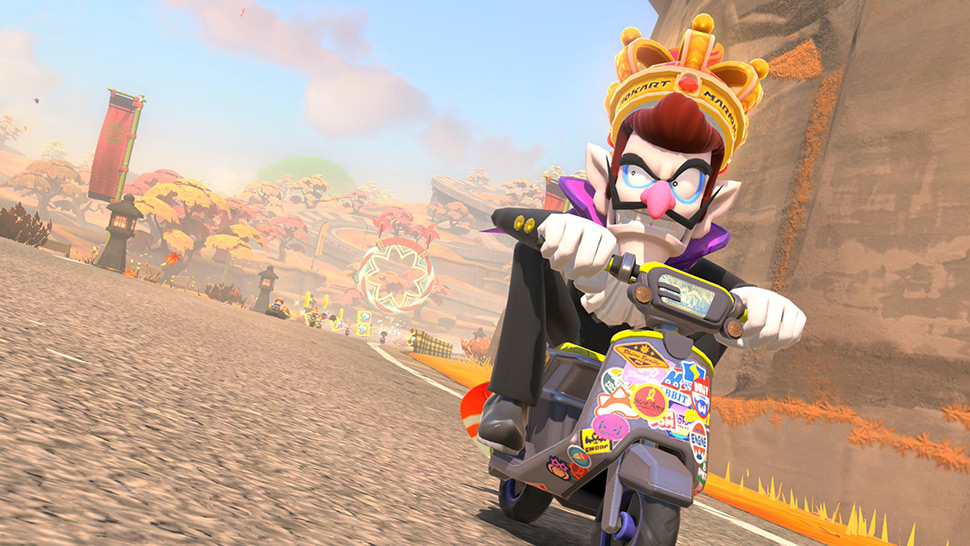
There is no doubt in my mind that Mario Kart World is a worthy successor to its predecessor and best-selling entry to the franchise Mario Kart 8 Deluxe on Nintendo Switch, although some bewildered design decisions open the door for content updates to further enhance the overall package. World genuinely feels fresh and distinct compared to the previous entries, largely due to Deluxe being an enhanced version of the Wii U offering, which already felt and played quite similar to Mario Kart 7 on 3DS (still enjoyable to play online to this day). Its expansive open-world design (a first for the series), visually vibrant and varied environmental biomes, and engaging new gameplay mechanics clearly set it apart.
The entire map is seamlessly interconnected, linking the entire continent together, helping with the illusion of it being alive and inviting. Buses wait for backpacking toads and other Mario franchise staple characters at bus stops, cheep-cheeps swimming in formations surrounding Koopa Troopa beach, and piranha plants scouring the hot sands of Desert Hills. Subtle shifts from daytime sunshine to nighttime glow add a natural rhythm to exploring the open world as well as during races. Dynamic weather, such as rain and snow, can alter the sensation of drifting around tracks, affecting kart handling. Thinking about using the lightning item to stun your opponents and you may end up triggering a rainstorm, along with more intense weather elements, hello tornadoes and are those item boxes raining down from the sky? I often found myself, across the dozens of hours I’ve already put into the game, lingering between races, soaking in the detailed environments and humming along to nostalgically remixed Mario tunes, a testament to Nintendo’s careful craft and rich history.
I’ve already briefly touched upon it, but Mario Kart World is the showcase title for Nintendo Switch 2, and it does not disappoint with unwavering 60fps performance when playing single-player docked or in handheld mode. This also translates into the smoothest online experience I’ve had with a Nintendo developed title to date (although it is not without faults), although local multiplayer drops down to 30fps with three or more players. The overall tone of Mario Kart World notably shifts away from previous entries, embracing a lighter and more playful mood with one of the most remarkable soundtracks to date. Characters are noticeably more expressive and cheerful throughout races, marking a clear departure from the intense and meme-worthy "death stares" from Mario Kart 8. Karts feel almost organic, further enhancing these playful sensations, dynamically bending, twisting, and bouncing as you race; perfectly complementing the whimsical charm that defines the game. Remarkably absent is any way to customize your kart (no optional wheels/tires and gliders have been removed for plane wings built into each kart), besides adding one of the hundreds of earnable stickers that may not even be visible on your kart of choice.
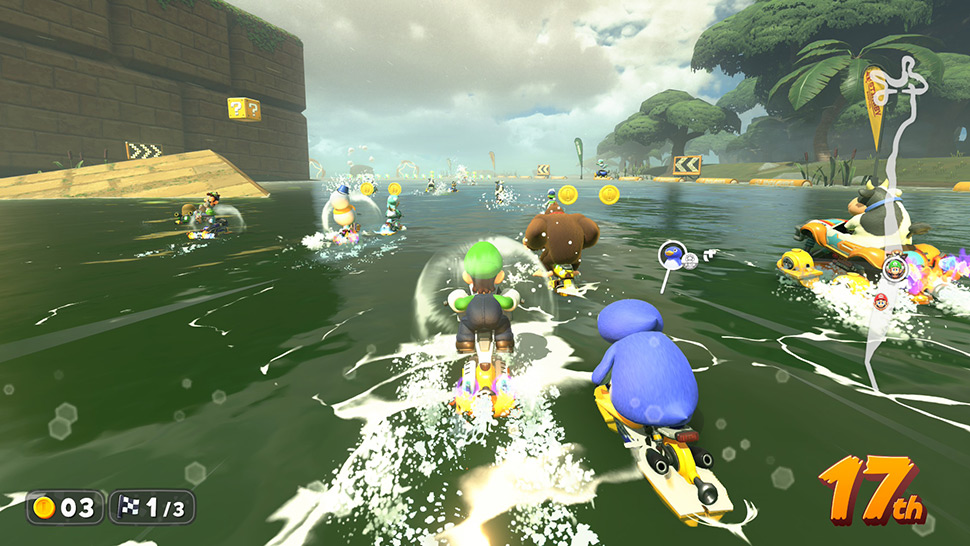
200cc doesn’t make an appearance in the game at least not yet, so you’ll have three different options when playing single-player; 50cc, 100cc, and 150cc. If you’ve been playing 8 Deluxe up until the release of Switch 2, you’ll find that drifting does not have the same tightness that it did, almost feeling more akin to the Wii version than anything else. Not that there's anything wrong, as it feels outstanding, once you’ve settled in after the adjustment period (we’ve been playing 8 for over a decade now!). Mario Kart World introduces a robust trick/parkour system that significantly expands upon the classic boost and power-slide mechanics. Players can chain tricks together, almost skateboarding-like, creating consecutive boosts and significantly enhancing gameplay depth. For example, a well-timed feather (a returning fan-favorite item) can propel you upward to reach a higher-tier grind rail, which can then be transitioned into a sideways leap to wall-ride off a ramp and flip through the air and back onto the track, ideally landing directly ahead of another driver (bonus points and a speed boost for landing on someone). Mastering these sequences feels rewarding and adds a genuinely fresh layer of strategy, skill, and luck to races.
This is where free roam shines, allowing you to experiment with various items, such as a mushroom granting a temporary speed boost and when it is the best moment to use it to cut corners of sections of tracks to come out on top of the competition. Yes, I’m sure influencers will ruin the surprise and mystic surrounding the gameplay by releasing “meta” videos, but I encourage you to try things out for yourself; sometimes the journey is more rewarding than the end goal. The included rewind feature, activated by holding down on the d-pad can only be used in single-player modes as well as free roam. There isn’t much use, as it doesn’t affect the CPU drivers, so only use it if you think it will be faster to reset yourself than waiting on Lakitu to come collect you after falling off the track. Sure, I’ve used it to avoid a blue shell if timed perfectly, but since no one else is affected, I still lost places during the race anyway.
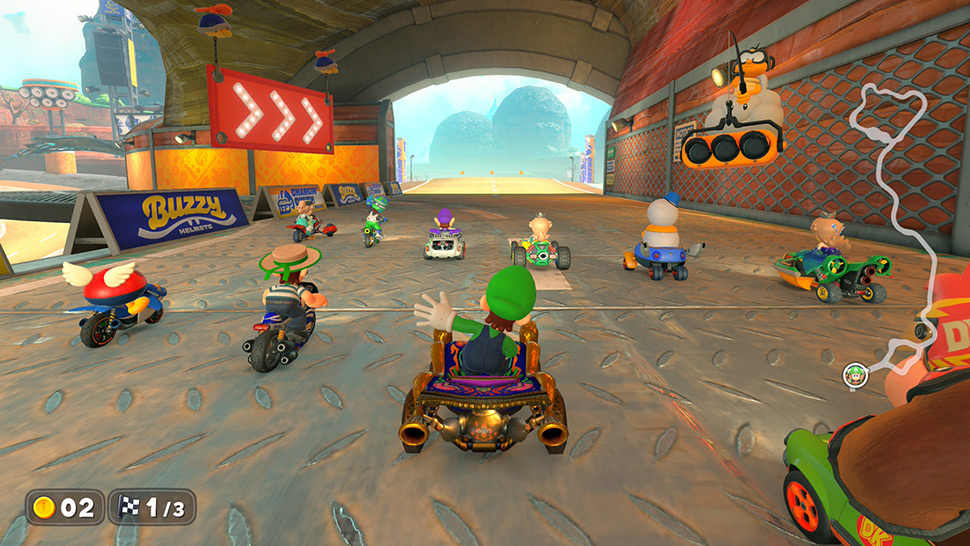
Nintendo thoughtfully integrates assistive options like steering assistance and intuitive tutorials, ensuring Mario Kart World remains welcoming to players of all skill levels. Strategically timing a golden mushroom, allowing you to trigger multiple speed boosts over a set period, gives you ample opportunity to get back in races and swiftly climb the ranks. There are several notable new items that make their debut in Mario Kart World, along with returning favorites from 8 Deluxe. Coin shells, golden in appearance, leave a trail of coins in their wake, cutting through opponents before exploding and showering the track with coins. Ice flowers can freeze other racers with balls of ice, the antithesis to the classic fire flower power-up. Hammers may be my favorite new addition, as you toss multiple hammers in an arc, smashing through the ground, and forming temporary obstacles.
Kamek’s purple crystal needs a special mention, as once triggered, Kamek, Bowser’s right-hand man...err...koopa flies through the pack of racers, transforming them into various creatures or non-playable characters in the Mario universe (such as Spike, Penguin, Nabbit, Goomba, etc.), summoning obstacles in his wake along the track, such as multiple Spikes tossing spiked balls from their mouths. You may be transformed into Cow (the internet’s fan-favorite), and larger than life cows will litter the landscape as if every track is Moo Moo Meadows. Besides the characters unlocked by completing each cup in Grand Prix (nothing unlocks from Knockout Tour), Kamek’s magic is the only way to unlock these NPC characters, gating a sizable amount of them behind complete randomness. Not to mention, everything about Kamek is randomized, with no guarantee you will be transformed, not to mention you need to be on the right track for the specific characters you are missing.
Similarly, unlocking alternate outfits for characters is completely randomized, with no discernible pattern regarding why one food power-up (known as Dash Food) unlocks a new costume and another does nothing. Sometimes you are only on the receiving end of a speed boost from the exquisitely detailed and themed food power-ups tied to each region and circuit of the map, and other times you have a chance of unlocking a new costume, but also have a chance of transformation into one you already have. Once you unlock a bunch of outfits, the character selection screen turns into a slog, as you will have to scroll through page after page of these costumes to find the character you want. There’s an option to sort the costumes together, but it does result in a cumbersome menu experience, and one that could have easily been avoided by limiting the main selection by unique character and having a costume option after character selection. Many of the outfits come from Mario Kart Tour (mobile), and you’ll need to locate one of Yoshi’s eateries in the right region to unlock the outfit you are after. Mario and Luigi’s Happi outfits can be unlocked by locating a restaurant near Cheep Cheep Falls and eating a plate of Sushi, whereas a food truck parked outside of Boo Cinema is the only location selling Cinema Popcorn.
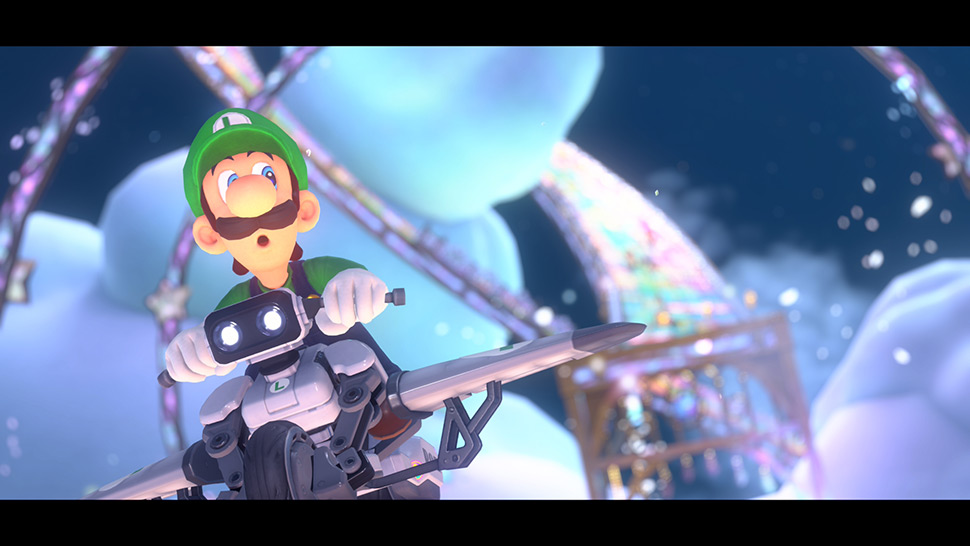
Visually, the game shines with vibrant environments (HDR really makes everything pop when properly set up in docked mode), detailed character animations, and standout moments like the genuinely astonishing redesigned Rainbow Road, which sets a new visual benchmark for the franchise. Vehicle handling remains accessible yet nuanced enough for both casual gamers and veteran players, striking a satisfying balance. The accessibility features, like smart-steering, and auto-accelerate genuinely help beginners join in quickly, though veterans may find some assists overly restrictive. There’s even an option to auto-use items, which appears to be timing based on the power-up. Smart-steering is turned on by default when you first boot the game, so ensure you disable it in the settings menu if you are not interested in using it.
Mario Kart World shakes up traditional Grand Prix events by mixing familiar three-lap races around dedicated circuits with single-lap, rally-style segments that seamlessly link the open world together. Only the first event of the four within each cup plays out in the traditional sense, as each subsequent race requires you to drive from track to track across open highway sections. There’s certainly been some heavy discourse with people voicing their displeasure, especially since there are zero customization options in Grand Prix to have four circuit events like in previous entries. I think the reaction to “change” in a longstanding formula is certainly overplayed at this point, as it certainly is a creative way to break up the monotony of simply doing the same circuits over and over, not to mention there are so many different shortcuts and locales to experience in these sections that I don’t hold any ill will towards them, but do understand the reasoning to want a more traditional setup.
Knockout Tour further ramps up the excitement, offering a marathon-style race that continuously eliminates racers at checkpoints, injecting constant tension and a sense of urgency throughout. This significantly improves the rally-style approach to the game that you simply don’t get in Grand Prix. This mode shifts racing tactics as players become noticeably more aggressive and defensive early on, making the race feel more like a strategic survival battle rather than a standard kart sprint. It makes you wonder if the open world was designed with Knockout Tour in mind, which seems to be the case, and begs the question why shoehorn the highway sections into Grand Prix at all?
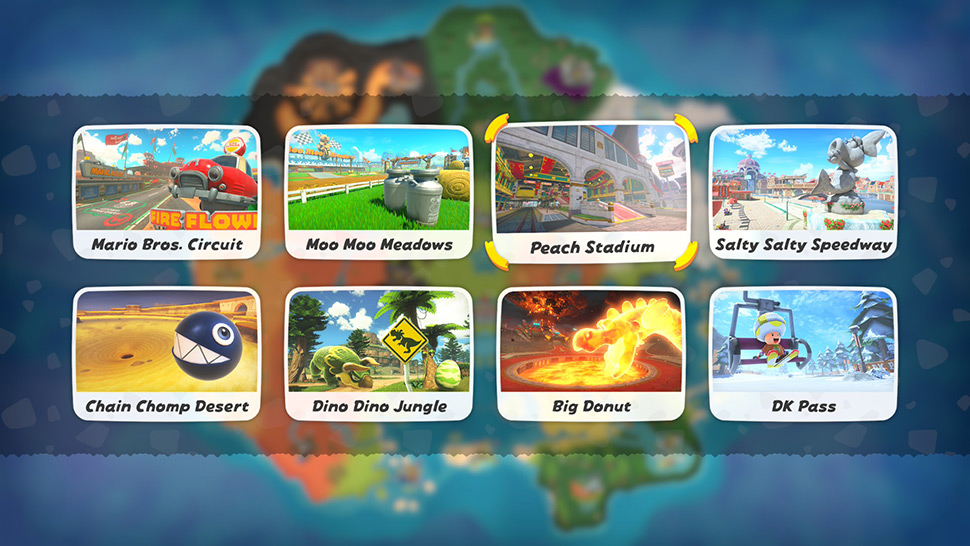
Track selection is consistently strong, offering standout courses that range from thrilling snowy mountain descent of DK Pass, to the volcanic circuits of Bowser’s Castle and Dry Bones Burnout. The vividly detailed tracks are teeming with animated wildlife, each delivering unique visual flair and distinct driving challenges, with Acorn Heights being one of my absolute favorites. With 30 tracks already populating the entire map, it’s hard to see where and if Nintendo will expand the gameworld to add new or returning tracks or maybe DLC will exist on a new map entirely.
Similarly to Mario Kart 8 on Wii U (not as bad), Battle Mode fans will be disappointed that while it is serviceable in its current state, it almost feels like a complete afterthought. Only two modes exist, Balloon Battle and Coin Runners, excluding fan-favorites Shine Thief and Renegade Roundup. Options are almost non-existent, with no way to remove the required time limit, or customize the power-ups outside of two presets.
Free Roam is another new addition, available both solo and online, providing a rewarding downtime experience, albeit a bit dull. Players can leisurely collect Peach Medallions, drive over Question Panels, and tackle intricate P-Switch Missions requiring precision driving and perfect timing. These skill-based or time-sensitive challenges range from consecutive boosted jumps through rings up a cliff, to elaborate multiple rail-grinding sequences, to competing in a time trial on the SNES style Mario Circuit ot Ghost Valley 1, complete with the track's original musical score. Completing 10 of the over 300 available P-Switch tasks are necessary for unlocking Mirror Mode, alongside finishing all Grand Prix and Knockout Tours at 150cc, locating 10 Question Panels and collecting 10 Peach Medallions, so you'll definitely want to explore Mario Kart World's expansive map thoroughly. Curiously, the beloved 200cc mode is missing at launch.
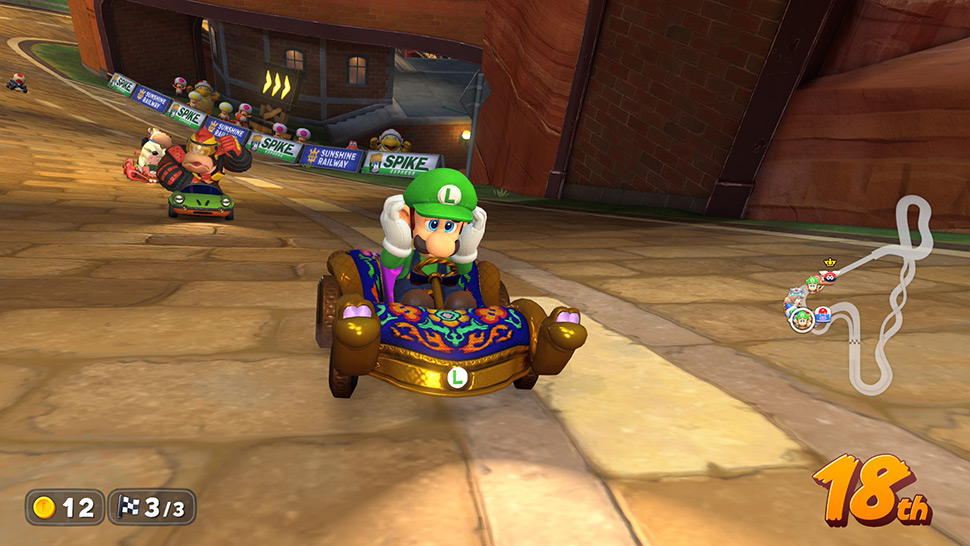
Accessible via the game’s main menu or while waiting for the next race/battle to start in an online lobby, Free Roam has interconnected and enjoyable moments with those you are playing with, along with a couple caveats. There’s no way to enjoy multiplayer Free Roam locally without resorting to a workaround: when waiting for a race to start online or wireless, you can drive around with up to two players in split-screen. However, P-Switch Missions are removed when exploring the map online, and there's a limitation on how far players can stray from one another. There’s no online leaderboards for the challengers, no way to compare your time against a friend, or even a way to see your own best times.
There are over 100 Question Panels hidden throughout the various track circuits, all of which can be found offline or online. Peach Medallions are often located in tough to reach locations, requiring you to think about how to best use the environment, such as using grind rails to parkour up a wall, or using a ramp to launch yourself into the sky. While viewing the map, you can see how many panels you've collected (or missing) around each of the 30 track circuits, as well the alternate costumes per character. Despite these engaging exploration elements, some features underwhelm. Stickers, while plentiful, suffer from limited placement options; disappointingly shallow for a feature so central. Not every vehicle supports sticker placement, and even those that do offer only a single fixed location without customization options like resizing or rotation. This limitation becomes particularly frustrating when certain karts, such as those featuring character-themed liveries (like a giant W for Wario) on the classic Pipe Frame kart, don’t display stickers at all.
Additionally, the only navigational aid while exploring is a barebones mini-map, providing a top-down 3D representation of your immediate surroundings. Without a compass indicator, it becomes needlessly complicated to determine which direction you are heading. The game doesn't tell you, but you can access the map while in free roam using the Y button to get your current bearings. Rainbow Road, which has always been a fan-favorite track in every game (maybe not on Wii) can't be accessed during Free Roam. In fact, you’ll probably barely/never see it online as well, as it needs to be selected from a “random” track choice. I have yet to race on the amazingly designed track online, and it isn’t even an option in any of the seven Knockout Tours.
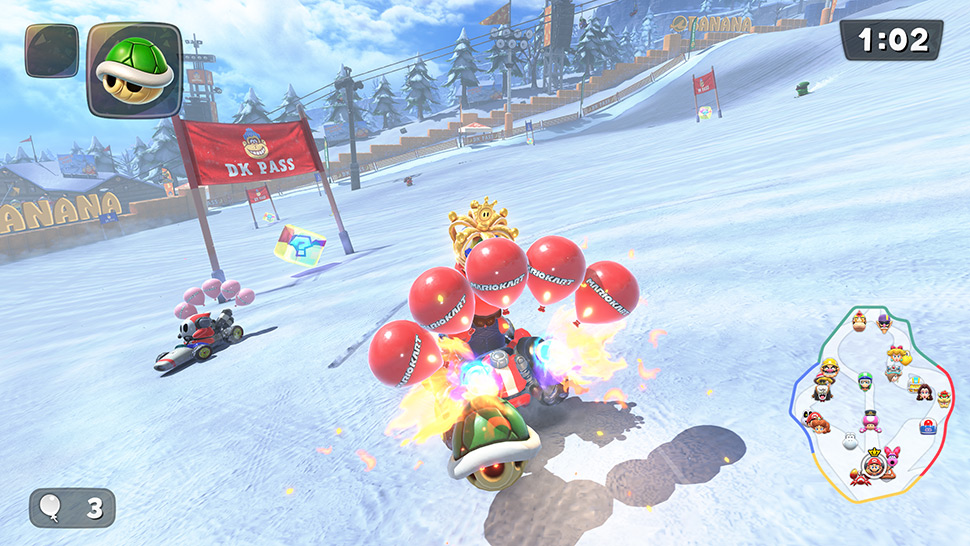
I do find the free-roaming experience of exploring the expansive game world thoroughly relaxing, particularly when paired with the exceptional piano lounge-style remixes of classic Mario Bros. music (please add a jukebox!). One standout moment nearly brought me to tears as an upbeat, piano-driven remix of the themes from Super Mario Land and Super Mario Land 2 flowed beautifully through my surround sound setup, capturing a perfect blend of nostalgic warmth and comforting exploration.
The online experience with friends particularly highlights how Nintendo still struggles to understand modern multiplayer expectations. In 2025, the inability to properly matchmake together feels archaic. Knockout Tour, despite being one of the game's standout modes, can only be enjoyed with friends if you're content with CPU opponents filling the remaining slots. This baffling limitation undermines the chaos and competition that makes 24-player races so thrilling. VS Races prove equally frustrating; attempting to join a friend often results in extended lobby waits or outright rejection if their room is full. The lack of basic party systems or group queuing that have been standard in online gaming for over a decade makes playing with friends feel like an afterthought rather than a core feature. It's frustrating to see Nintendo nail so many innovative gameplay elements while fumbling fundamental online functionality that other developers perfected years ago.
Simply Put
Mario Kart World is a visually stunning and exhilarating racer that delivers substantial innovations and some of the best gameplay mechanics the series has ever seen. The massive 24-player races justify the $80 price tag, even if it causes initial sticker shock. While held back by restrictive customization options, limited Battle Mode offerings, awkward online experiences when playing with friends, and an unintuitive character selection interface, the game still manages to deliver plenty of excitement and charm. Despite these notable caveats, Mario Kart World remains a must-buy title alongside the new system.
]]>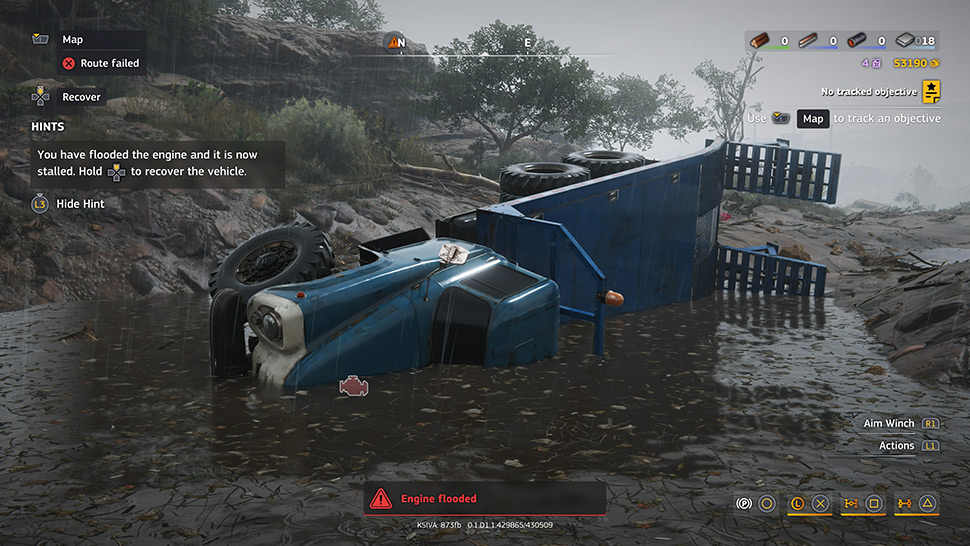
At its core, RoadCraft is a satisfying fusion of Saber's previous hits. It borrows streamlined UI elements and gameplay cues from Expeditions, while infusing the infrastructure-repair mechanics popularized by the Runner series. However, RoadCraft significantly ups the ante. Instead of merely delivering a stack of lumber or steel beams and calling it a day, players are now actively involved in designing and constructing critical infrastructure. Need a bridge to cross that gorge? You're not just delivering materials; you’re planning its layout, choosing the path, and carefully assembling it piece-by-piece. Want to create a more traversable road through that swampy marsh? Lay out sand, flatten the terrain, pave it, and compress the ground through a methodical four-step process, turning previously impassable terrain into a reliable route.
Yet, your construction tasks don’t stop at roads and bridges. You’ll also replace broken pipes, carefully using crane trucks to remove damaged sections, recycling old materials, and hauling newly built pipes with cargo vehicles to complete repairs. Moreover, players will face the meticulous task of digging through challenging terrain to lay underground power cables, reconnecting power lines vital to restarting critical infrastructure like power plants.
Fundamentally, RoadCraft doesn’t stray far from the established formula—grab big truck, load a big truck, move cargo slowly and carefully to your destination. But it streamlines certain mechanics from the more intricate systems of SnowRunner. Gone are the detailed gear shifts and guesswork of terrain depth; now a quick press of a face button engages Low Gear, 4-Wheel Drive, or Diff Lock respectively, making navigation slightly more approachable without sacrificing the authentic feel of off-road traversal.
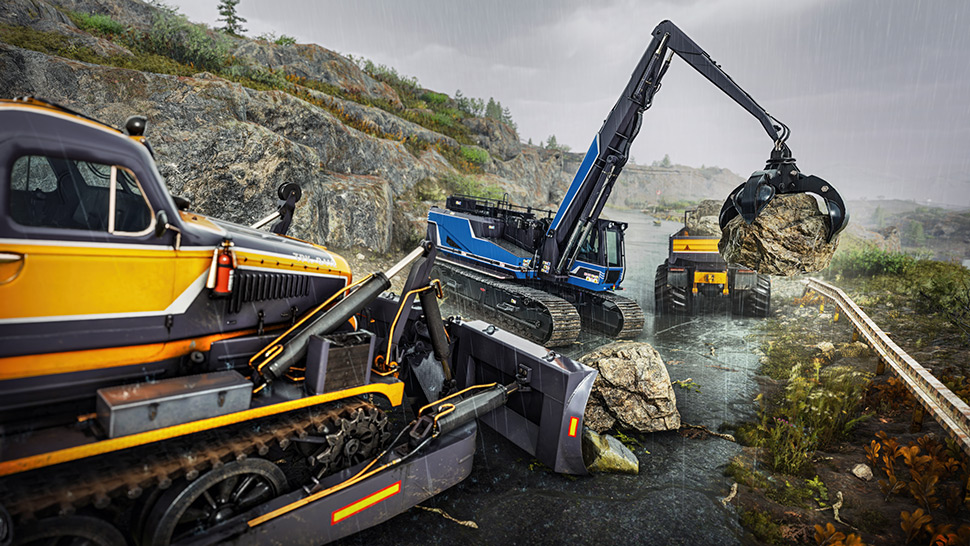
Customization takes a noticeable backseat this time around. While previous games allowed for detailed vehicle modifications, swapping tires, altering transmissions, or outfitting winches, RoadCraft opts for simplicity. You can purchase new models of vehicles as upgrades, but apart from cosmetic changes such as company liveries, customization options feel disappointingly sparse. It’s a missed opportunity that might disappoint enthusiasts who previously enjoyed tailoring their trucks to specific tasks.
Vehicle variety, however, remains impressively robust. Classic staples like scout vehicles, hefty transport trucks, cranes, and equipment haulers return, complemented by exciting newcomers such as steamrollers and asphalt layers. Each vehicle class presents distinct handling quirks, rear-wheel steering, treaded navigation, and specialized equipment handling, which constantly challenges players to adapt before inevitably ending up sideways in a ditch or submerged in a river.
RoadCraft expands the experience beyond just individual truck operation. Players manage a company responsible for reconnecting isolated areas devastated by a natural disasters, leaving roads destroyed, debris scattered everywhere, widespread flooding, and a complete loss of power. AI-driven companions deliver cargo along player-constructed routes, but this system introduces new strategic considerations: poorly built or inadequately maintained roads will lead to deliveries failing and routes deteriorating over time. The AI companions aren't perfect; their persistent mishaps and tendency to further damage terrain can occasionally feel more like babysitting than management. Still, successfully maintaining efficient routes provides a satisfying layer of depth, rewarding players with essential cash and experience.
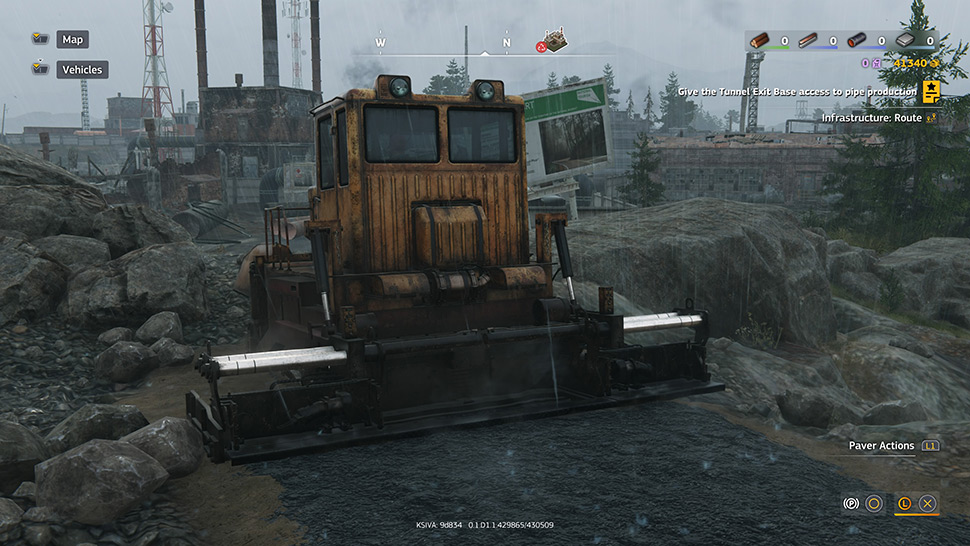
A thoughtful addition is the recycling mechanic. Certain areas contain factories that convert collected debris into essential repair materials. Scavenging rusty cars, broken fences, and battered pipes not only cleans up the landscape but also directly contributes to your construction efforts. This feature elegantly combines environmental storytelling with practical gameplay rewards.
RoadCraft truly shines in multiplayer, featuring robust four-player cooperative play with full cross-platform support. Cooperation isn’t just encouraged; it’s integral. The four-step road construction process aligns ideally with having a full team online, efficiently dividing tasks among players. From laying down preliminary sand beds to the final compression stage, teamwork is crucial for smooth and rapid progression. Multiplayer quirks persist, however, particularly with physics synchronization. In one memorable session, Kevin’s mere presence caused my crane truck to perform a physics-defying breakdance routine, catapulting my scout vehicle clear across the map. Moments like these might technically be bugs, but they're undeniably entertaining, adding to the charm of co-op play.
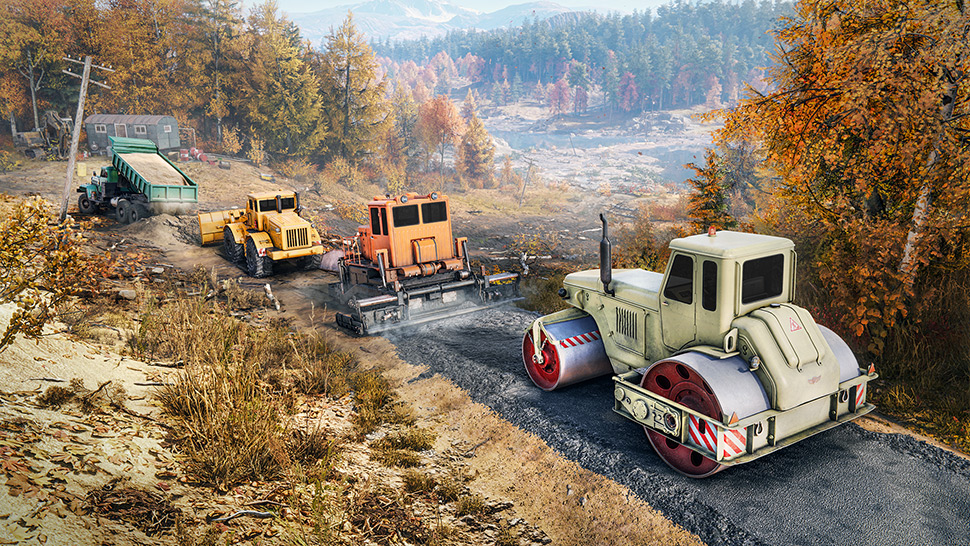
What makes the multiplayer experience even more seamless is the excellent progression integration. When joining a friend’s game, you’re not just a temporary guest. You’ll work together on the host’s version of the map, completing objectives and tackling repairs, and when you leave, you have the option to save all the progress made during that session. This means you can pick up exactly where you left off in your friend’s world, now in your own session. It’s an elegant solution that respects your time and efforts, ensuring that no progress feels wasted.
Simply Put
RoadCraft delivers a compelling blend of strategic construction, management, and satisfying vehicular simulation. Though simplified mechanics and limited customization might frustrate hardcore fans, the game’s expansive co-op features, innovative recycling system, and dynamic road-building mechanics more than compensate. RoadCraft offers exactly what fans expect, engaging gameplay wrapped in delightful off-road absurdity. After all, who doesn’t enjoy watching trucks spontaneously dance up mountains?
RoadCraft blends satisfying vehicle simulation and thoughtful infrastructure-building mechanics with standout multiplayer gameplay, despite some minor simplifications and lingering quirks.
]]>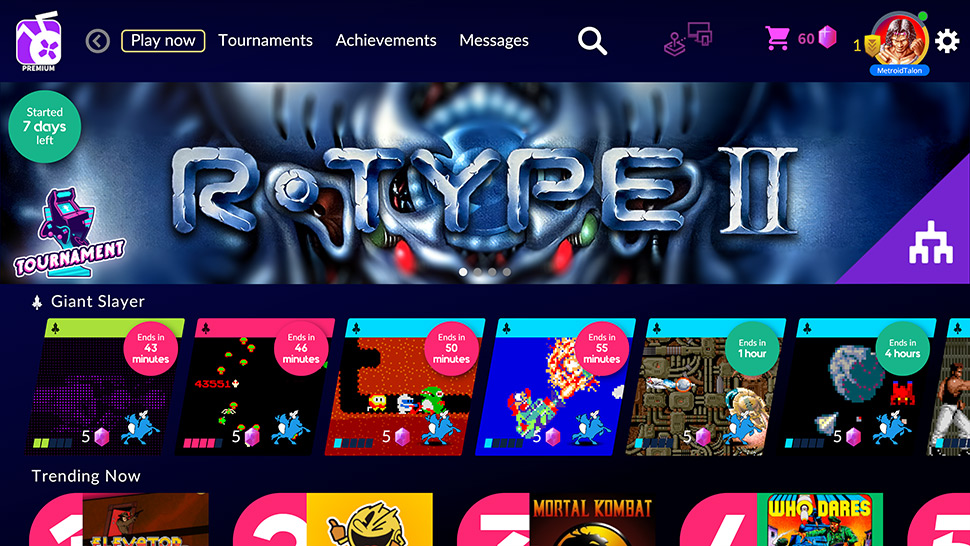
Game Library and Content
Crowdfunded through Kickstarter, Antstream Arcade aims to evoke powerful nostalgia by offering a live streaming service focusing primarily on retro video games, complemented by several retro-inspired indie games, such as Flea! (NES), Golden Wing (Amiga), and Rune Master (MSX). Currently available on PC, Mac, Linux, Android, Firestick, and your web browser (beta), Antstream Arcade boasts a games library of 1,470 titles (according to the official website). It's worth noting that this number includes games available across multiple platforms. On Xbox, the game icon advertises "play over 1,300" titles. As with any streaming service, the number represents the total number of games, but not the unique number of games on the service. Licensing plays a crucial role in availability, and not all titles accessible on PC are currently accessible on Xbox. Notably, Namco-developed/published arcade titles such as Pac-Man, Galaga, Dig Dug, Splatterhouse, and more have been removed from the service on Xbox (at the time of this review) due to ongoing licensing complications between Namco and Microsoft, as disclosed by developers on the official Discord.
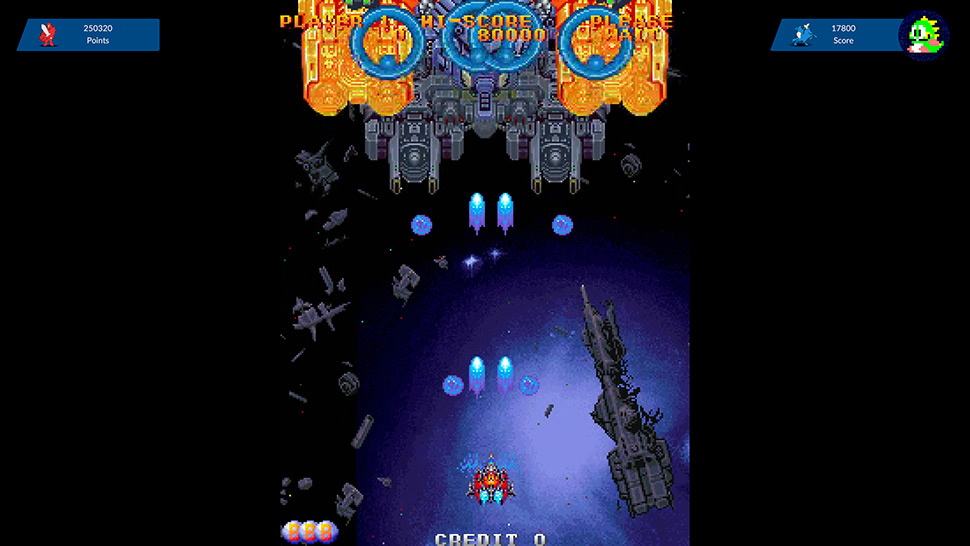
Besides the aforementioned indie games, Antstream Arcade's library offers a diverse selection of games spanning the 1970s, 1980s, 1990s, and 2000s. The collection heavily features arcade titles, early home consoles, and PCs like the Amiga, Commodore 64, and the ZX Spectrum, along with a smattering of games from other platforms such as the MSX/MSX2, NES, SNES, Atari 2600/7800, Sega Genesis, and more. Personally, I was pleasantly surprised to rediscover DOS-based LucasArts Games that I have very fond memories of playing, including classics like The Secret of Monkey Island, Day of the Tentacle, Indiana Jones and the Fate of Atlantis, and even the three Super Star Wars (SNES) titles. While new games are consistently added on a weekly basis, it's important to note that the focus of Antstream Arcade lies in providing an authentic arcade preservation experience rather than offering entire console libraries. And in this regard, it certainly does not disappoint.
Interface and Navigation
The greatest appeal of Antstream Arcade lies in the seamless and swift transition into gameplay. Within seconds, I found myself immersed in Earthworm Jim (SNES/Genesis), battling an evil army in SNK's Sengoku (Arcade), or defending humanity from robots in Robotron: 2084 (Commodore 64). However, the UI navigation could use some refinement. While browsing through various genres listed on the main screen adds an element of excitement, the absence of dedicated platform or genre pages may require users to master the search function to locate specific games.

The search feature proves to be potent and effectively displays relevant games categorized by publishers, genres, platforms, or year released. One peculiar aspect is the list of players appearing above the game results, which seems unnecessary as players typically search for games rather than other users. For instance, searching for "irem," synonymous with classic shoot-'em-ups, yields game results for Captain Dynamo due to the game's description containing the word "retirement," while the 16 games listed under Irem as a publisher can be found underneath. Although the search results display all versions of games (if available on multiple platforms), the UI layout occasionally covers the platform ribbon on the game thumbnails with the challenge rocketship icon.
Technical Performance and Controls
Despite being streamed, I have not encountered any noticeable latency issues in the almost 300 different games I've played so far on Antstream Arcade. The service automatically selects the best server location for optimal performance, but users also have the option to manually choose their preferred server location. The connection test provides valuable insights into various aspects, including bandwidth, streaming capability, packet loss, input, and connection quality.
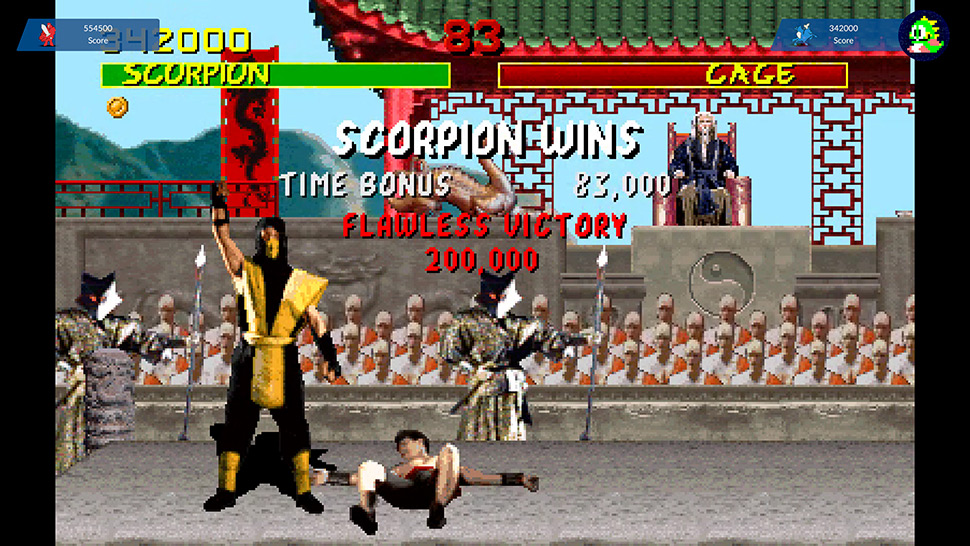
With a strong emphasis on authenticity, the platform strives to preserve the original gaming experience. For example, titles like Double Dragon (Arcade) retain any slowdowns present in the original game. As a result, users shouldn't expect performance enhancements or modern emulation options. The sole in-game option available allows users to adjust the game's volume, maintaining the original gameplay as closely as possible.
The platform provides four save slots, though some users have reported inconsistent functionality on Xbox. The UI for saving can be unintuitive; pausing the game allows users to save, but selecting "save" from the pause menu does nothing - instead, users need to use the plus symbols indicating different save slots.
Control schemes are displayed upon launching each game, but the platform does not offer control remapping or turbo button options. This limitation affects certain three-button arcade games that could benefit from more intuitive button layouts. For instance, Genesis/Mega Drive games use an X, A, B configuration instead of the potentially more intuitive X, Y, B setup.
Challenges and Community Features
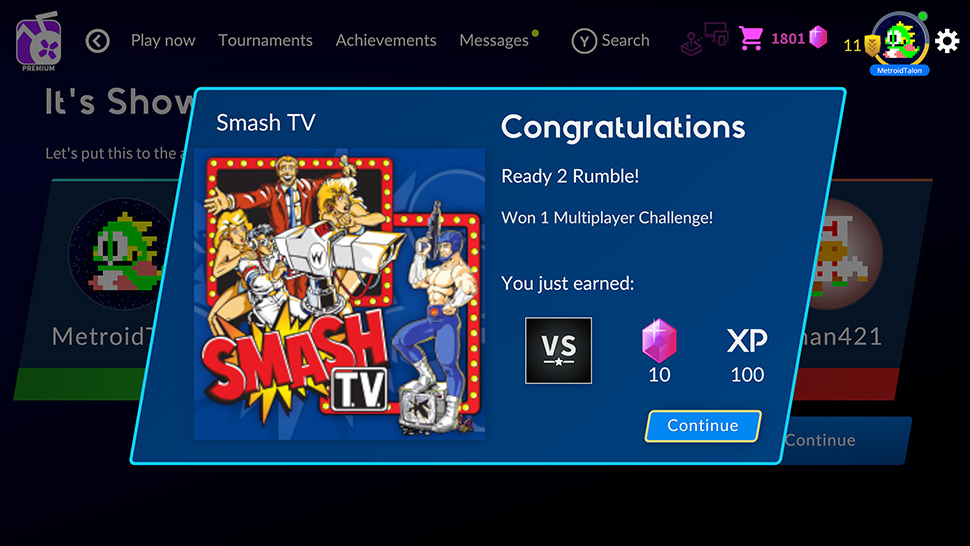
The challenge system adds a compelling competitive element to the service. Supported titles offer various challenges with different gem requirements. Players can compete for leaderboard positions, challenge friends to beat their scores/times, or engage in community-wide battles like Giant Slayer. Duels pit players against a single opponent, with each betting an equal amount of gems and the winner claiming the entire pool. The recent players list ensures you always have someone to compete with, even without in-game friends.
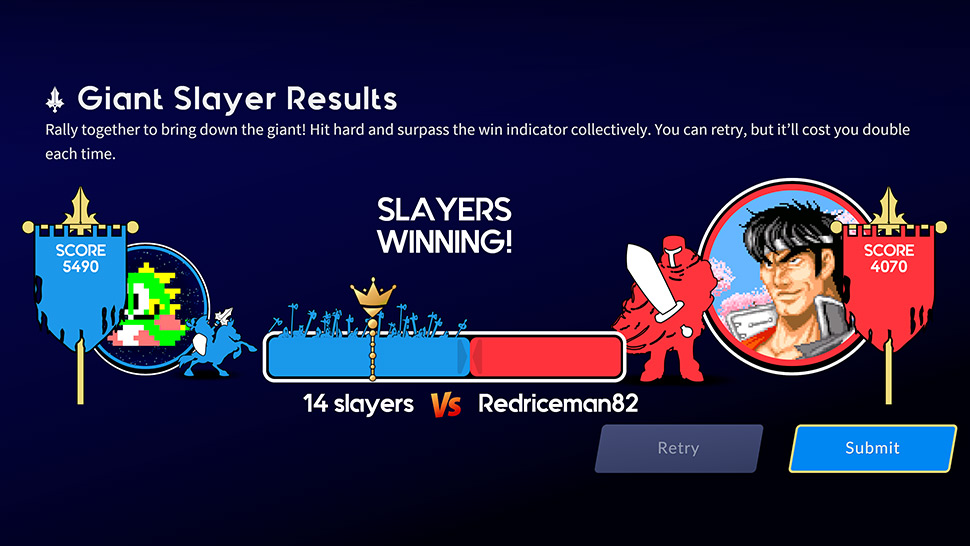
Giant Slayer mode particularly stands out, allowing one player to compete against the entire community by posting a challenging score that others must try to beat. These time-limited challenges create a constant stream of new events and foster an engaged community. Score-based challenges limit you to a single life, adding tension and encouraging "one more try" attempts.
Subscription Model and Pricing
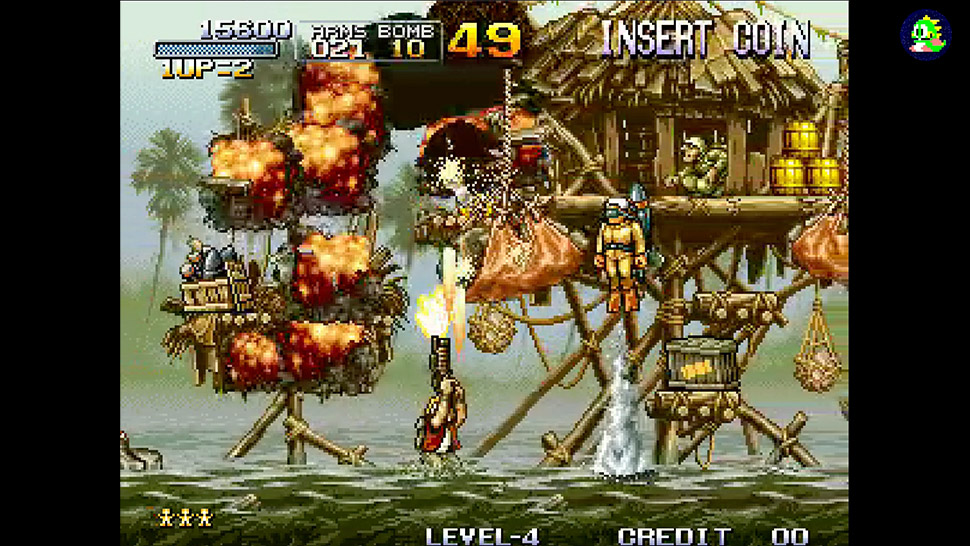
Antstream Arcade offers two main subscription options: a yearly subscription at $29.99 or a lifetime subscription at $79.99. Each provides unlimited access to the platform's extensive game collection. However, there's no upgrade path between tiers - choosing to switch from yearly to lifetime requires paying the full lifetime fee without credit for previous payments.
The gem currency system functions differently on Xbox compared to PC. While PC users can earn gems to play games without a subscription, Xbox subscribers get unrestricted access to the entire library, with gems primarily used for tournaments and challenges. The daily login bonus provides additional gems, though Xbox Series X|S users need to fully close and restart the game to claim this reward when using Quick Resume.
Technical Limitations and Audio-Visual Quality
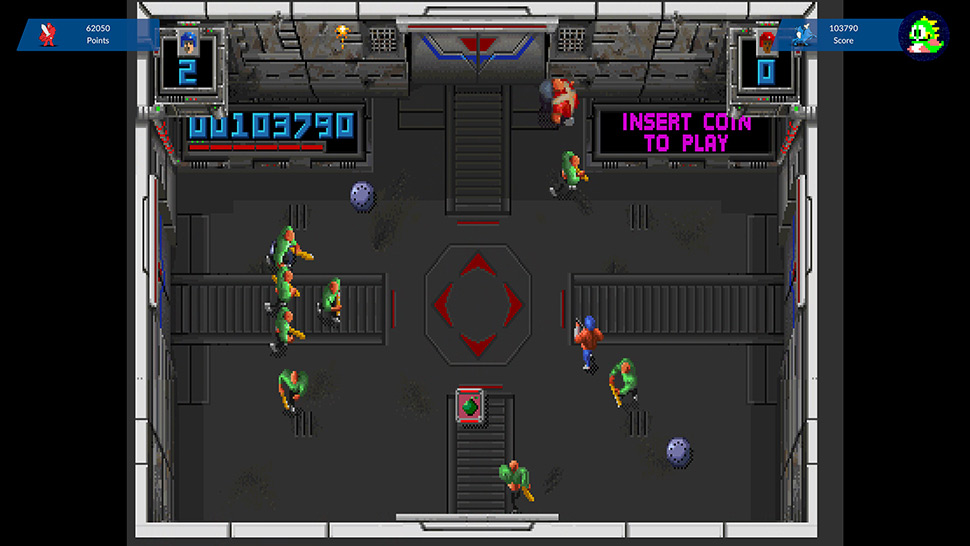
While Antstream Arcade achieves impressive input lag-free streaming, this comes with some trade-offs in visual and audio quality. The impact varies by game type and on-screen action complexity. Players may encounter screen tearing, blurry visuals, and occasional poor image quality. These issues are less noticeable in slower-paced games like Bubble Bobble (Arcade) but become more apparent in fast-paced titles like Mortal Kombat (Arcade), where compression artifacts are visible around character edges.
Some games have had music removed due to licensing issues, such as Spy Hunter (Arcade), and occasional audio glitches occur with sound effects. These audio issues typically resolve after restarting the application.
Simply Put
Antstream Arcade stands as a commendable effort in game preservation, making classic games accessible to future generations. With over 1,300 games available and regular weekly additions, the service offers excellent value through its reasonable subscription options. While licensing issues may occasionally affect game availability, and the interface could benefit from some refinements, these minor drawbacks don't significantly impact the overall experience. The platform successfully balances gaming nostalgia with modern convenience, creating an engaging way to explore and enjoy retro gaming history.
]]>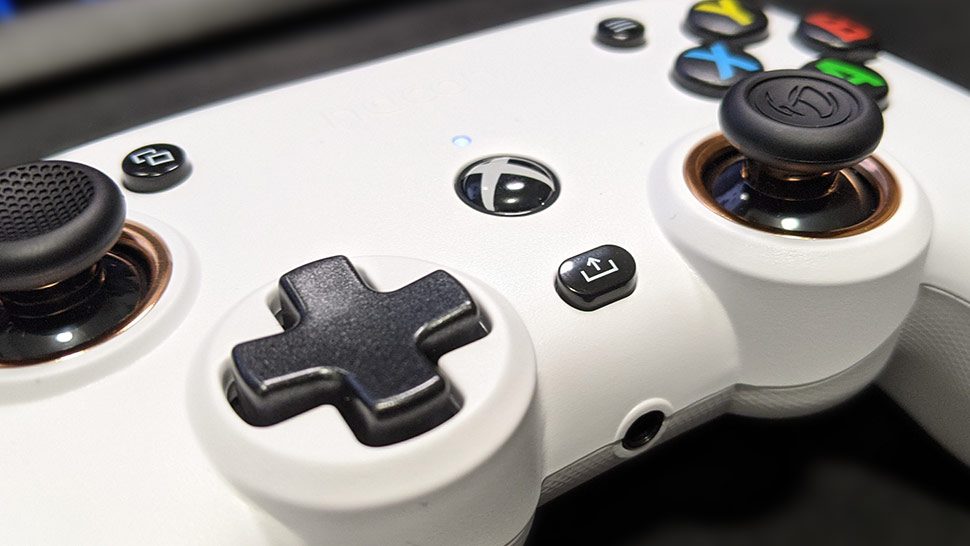
The Pro Compact wired controller for Xbox is smaller (and lighter) than anything offered by Microsoft (15% smaller, according to Nacon). More importantly, the handles have been redesigned, changing how it rests in your hands. This doesn't mean that anyone with larger than average hands will find it more difficult or uncomfortable to use for long periods, but it does mean you need to make adjustments. The compact shape features shorter handles than Microsoft's Xbox controller, with a matte front and textured grips (although less prominent than the Xbox controller). The deep groove between the handle and the upper half of the controller is designed for you to rest your middle fingers. My pinky fingers barely wrap around the bottom tip of the handle since it needs to be held with a higher grip than usual. After getting used to the Pro Compact, I can say it is pretty comfortable; I prefer it to the Xbox controller in certain situations. The long braided USB-A cable is 300 centimeters in length or just under 10 feet. A breakout connection is included at the tail end, providing safety just in case someone or something gets caught in the cable.
As an officially licensed controller, the analog stick placement remains asymmetrical. There's a bit less space between the four face buttons than the standard controller, not to mention that the buttons are more prominent yet flatter. The menu and view buttons (I will forever unofficially call them start and select) are glossy (compared to the matte finish of all four face buttons) and moved away from the controller's center. The view button sits next to the left analog stick, and the menu button is the next-door neighbor to the Y button. With these new placements, you don't even have to lift your thumbs off their usual resting spots to use them. When using a headset on a PC or Xbox, you typically have to purchase a $15 Dolby Atmos license, which I highly recommend because 3D audio is a game-changer. The Pro Compact includes the license, letting you plug in any gaming headset into the 3.5mm headphone jack at the bottom of the controller.
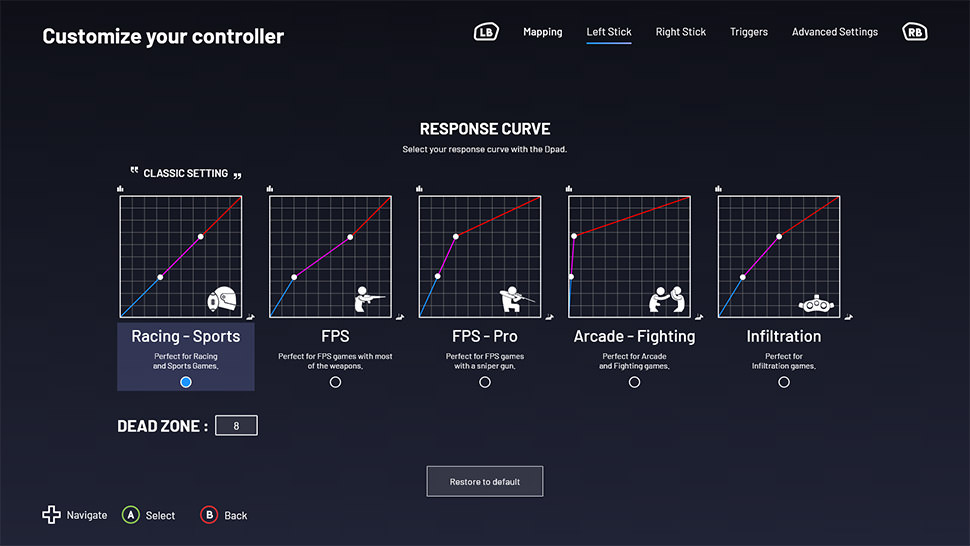
The analog sticks are concave (naturally) but are completely smooth around the edges, featuring a uniquely designed textured finish on the inside. The D-pad features the classic "plus" design, which may intrigue fans compared to the redesigned "rocker" offering of the Xbox controller. It is certainly less "clicky," feeling squishy under your thumb as you move around each of the four main cardinal directions. There is less feedback as you shift your thumb around, and the sensation can be best described as muted. I won't say it's not good, but it certainly may not be ideal depending on the type of game you are playing. Navigating through menus or switching weapon loadouts is fine, but there isn't enough feedback when pulling off special moves or combos in fighting games.
The Nacon App on Windows 10 and Xbox allows you to remap the inputs for specific buttons, adjust the response curves for both analog sticks, and even adjust the sensitivity for each of the triggers. If this is your first foray into adjustable dead zones, you are in for a treat, especially for first-person shooters. Interestingly enough, the app, which is available on PC and Xbox, allows for enabling or disabling vibrations and converting the 8-way D-pad to a 4-way D-pad, perfect for 2D side-scrolling games. An easy-to-follow guide effortlessly shows the best presets for specific genres, such as racing games, first-person shooters, or fighting games. Your customizations can be turned on/off with the switch on the rear of the controller, although you can only have a single custom profile. Any controller updates will come from inside the app; however, none has been released yet.
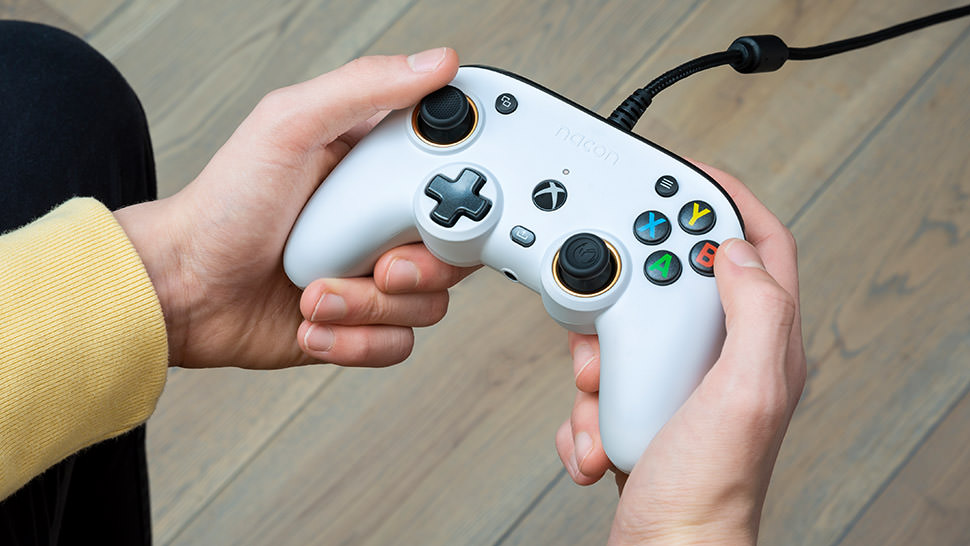
Simply Put
The Rig Nacon Pro Compact controller is a smaller, lighter, and cheaper alternative for Xbox and PC (especially since it includes a lifetime Dolby Atmos license). It does take some adjustment to get used to the placement of the controller in your hands, but I found it to be quite comfortable, and I have larger than average hands. I would have preferred less of a gap between the triggers and shoulder buttons or none at all to match the standard Xbox controller. I feel I spend more time adjusting the placement of my pointer fingers since I can't comfortably press the shoulder and triggers without lifting my fingers like I do with my Xbox controllers. It may not become my permanent Xbox controller due to it being tethered, but it will become my primary PC controller for now.
]]>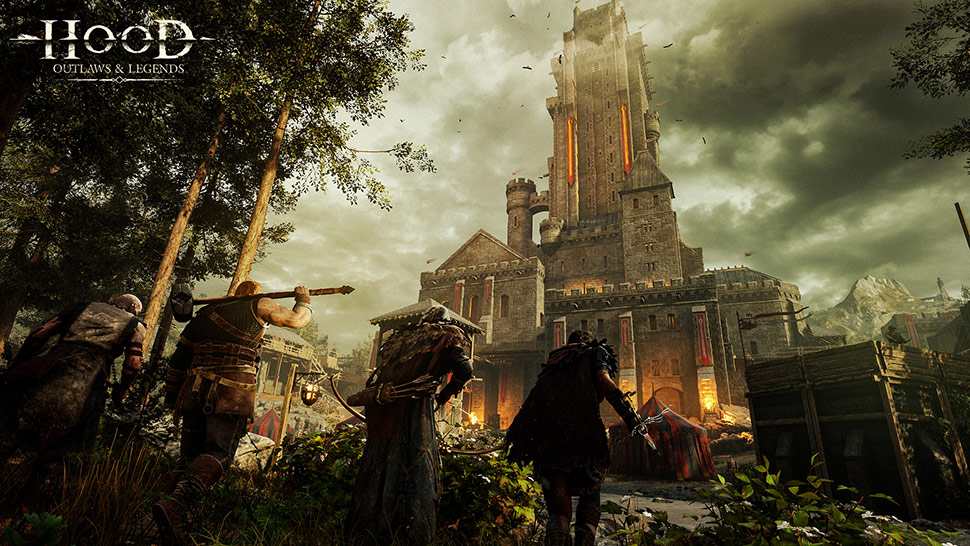
Only one primary competitive game mode exists (so far), and although that may mean the game feels "lite" on content, especially compared to other offerings, I've yet to grow tired of trying to pull off the perfect heist. It helps that there are a handful of uniquely designed maps, with at least one more coming in an upcoming season, as indicated by the post-launch roadmap. The training mode, the only other game mode, allows teams to hone their craft against the AI, merely serving as practice, but doesn't offer anything as thrilling as retrieving the chest while fending off another group. If you only want to focus on the game's cooperative aspect and not the competitive nature of playing against other players, this mode does precisely that.
Teams start on opposite sides of the map, far enough that you'll contend with AI guards before encountering an opposing player, but the objectives remain the same: steal the vault key, retrieve the chest, make your escape. Guards clad in armor, clinging to their swords, bows, and other medieval weaponry, patrol the districts, ensuring that you need to stay in the darkness, stealthily making your way through nearby bushes. If you are seen, the guards can raise the alert level, summoning more soldiers to contend with, shutting all gates, and locking down the area. Stealth is the key to victory, and thankfully, the maps are covered in flora to mask your approach. The first step is stealing the key dangling from the belt of the slow-moving but massive presence known as the Sheriff. As you approach, the faint rumbling emanating from your controller grows ever stronger, an effect that works to drive home the monstrous force that is the Sheriff. One false move and he can crush you between his mountainous hands, killing you instantly. You may be thinking, well, I'll just kill him first, but no, this beast is an unrelenting force, and although you may take him down to a knee, buying precious seconds to make your escape, he will always rise up and never stop hunting you. Think medieval Jason Voorhees.
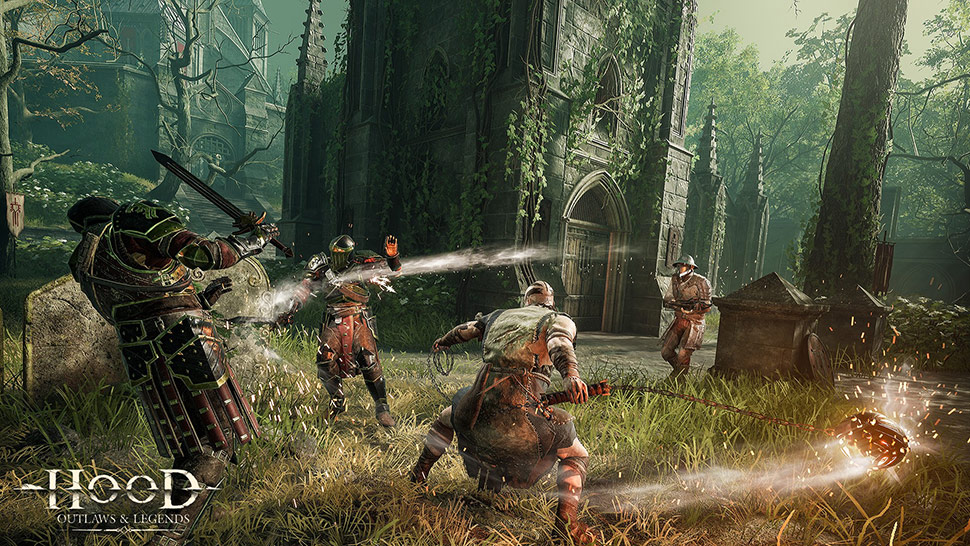
After acquiring the key, you'll need to locate the hidden vault on the map while trying to defend yourself from the AI and other players who wish to acquire the chest for themselves. If you are lucky enough to snag the chest first, you'll notice there are multiple extraction points. These may be closer to your initial spawn point, in the middle of the map, or right next to the enemy's starting location. Depending on the vault's location, you may opt to find the closest place in an attempt to hoist the chest onto the ship as quickly as you can, or strategically opt for a location safely away from prying eyes. Either way, carrying the chest is a chore, as the weight of the shiny gold inside forces the one with it to move at a snail's pace. The brute John moves the fastest with the chest, so it is always good to have him traverse the map with it in hand. This is where coordination and teamwork start to lead teams to victory. Of course, with multiple possible locations, the enemy team can opt for chasing you down or try to guess the spot and sit and wait, ready to ambush.
Once reached, teams must extract the chest, either sacrificing a single person to progress slowly or using two players to speed up the process. Melee classes operate the crank faster than ranged, and without a balanced team, you are unlikely to win. Admittedly, that won't always be the case. I've already encountered groups that favored one class over the other, but for 90% of my matches while playing with random players, classes were evenly balanced between melee and ranged classes. Once extraction has begun, a meter appears for all players. The meter itself has several notches, where progress is saved, and rewards are given to the team that reaches those points. This means that a team can do 90% of the work, earn rewards, and the opposing team can swoop in and finish the final step and still win the match. It makes for some exciting last-minute victories (or losses), precisely what you would want from a heist-based title.
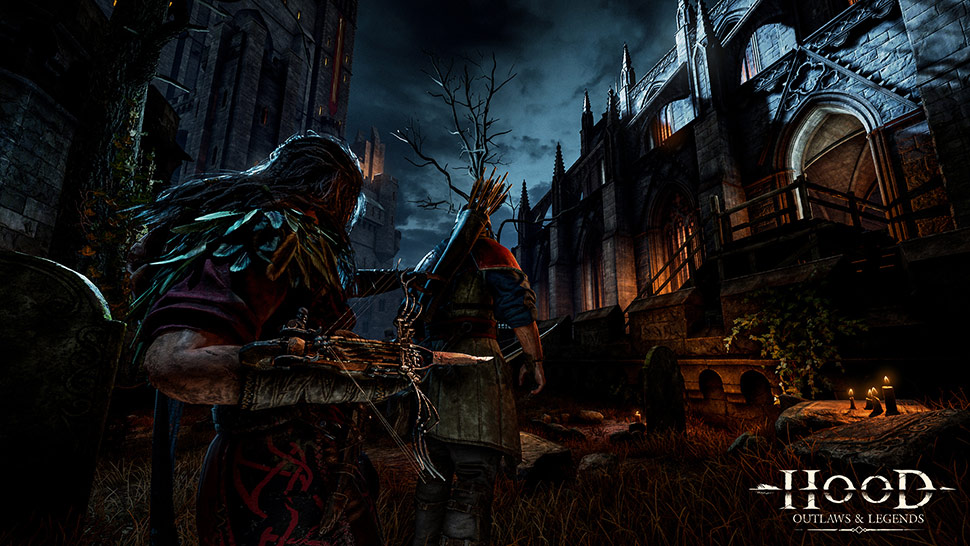
Another component and one that is almost as important as controlling the chest itself involves securing and holding the control points scattered throughout the map. These serve as spawn positions for your team, allowing you to get across the map after you die. Imagine fighting to extract the treasure, but every time a member of your crew departs, you need to run across the map in its entirety. Not only that, but shortcuts can be opened as you make your approach, from unlocking doors or releasing ropes to climb to offer alternate paths. With heightened security during the final moments of each match, the elite guards that spawn can put a damper on your plan to traverse the map safely. At the same time, the AI can work in your favor when the Sheriff makes his presence known, methodically making a bee-line straight for the extraction site. Although the intelligence of the AI could use some work. Sometimes, they will walk right past the players working on securing the chest and chase other nearby players. I would think that acquiring the gold would be their top priority, and therefore, anyone seen trying to steal the treasure would be a higher perceived threat.
There are four classes in Hood: Outlaws & Legends, each one based on a character from the fabled story of Robin Hood. The Ranger, Robin, is equipped with a bow, making him a powerful long-range class, capable of one-tapping foes with accurate headshots and firing explosive fire arrows. The Hunter, Marianne, is the best at remaining concealed (literally being able to turn invisible), and her crossbow may not have the range of Robin's bow, but its burst-fire makes it deadly at close range. The Brawler, (Little) John, wields a massive two-handed sledgehammer, making him the most potent melee class available and the king of close-quarters combat. He is also the only class that can temporarily lift the massive gates, letting his teammates make it through the area without finding an alternate path. The Mystic, Tooke (based on Friar Tuck), is the ultimate support class and the only one capable of healing not only himself but anyone on your crew within his vicinity.
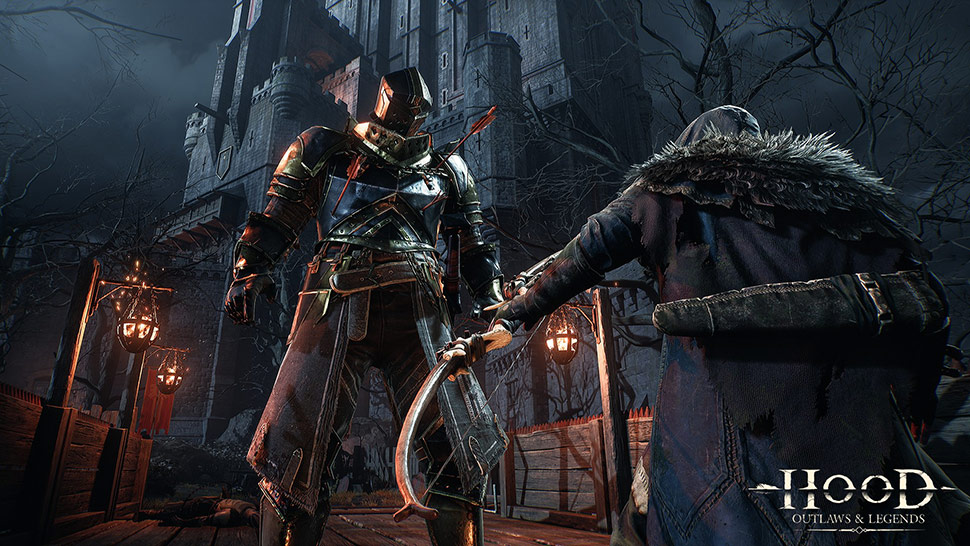
Their primary weapons for each of the classes are only the tip of the iceberg, and although the game's combat isn't that deep, it still provides plenty of strategy and incredible moments. First and foremost, your actions are limited by your current stamina. Light attacks are weaker in terms of damage but use less energy when compared to stronger heavy attacks. Blocking consumes stamina, ensuring you can't remain protected for too long, especially since heavy attacks can leave you stunned, breaking through anyone blocking. Parrying incoming attacks can give you a chance at an unimpeded counter-attack, given you still have enough stamina left. The mystic's poisonous smoke bombs can instantly drain the stamina of anyone caught in the blast (even himself), leaving players on both sides of the battlefield open to attack at range.
As you level up by earning experience points and gold from completing heists, new cosmetics, such as character outfits and weapon skins, become available to purchase, as well as perks. Only three bonuses can be equipped simultaneously. These offer slight advantages against other players, such as increased crouched movement speed or a leeching effect that can make Tooke unbeatable in most one-on-one melee engagements. When coordinating with a team, these perks can alter your playstyle and even how your abilities operate. Outside of the perks, players are on an even playing field, with only unlockable cosmetics serving as a driving force to customize the appearance of your characters. With the purchase of the battle pass, you'll earn premium outfits and skins, as well as banners, but the roadmap will provide other free cosmetics and content for all players.
Simply Put
Hood: Outlaws & Legends is the best PvPvE game I've played in quite some time. Sure, it has its issues; the AI can sometimes feel braindead, class balancing needs to be tweaked, and animations can be a bit janky, but the adrenaline rush of the heist makes up for all of that. Not to mention, this is only a $30 game, and the developers have released a fully fleshed-out roadmap for ongoing support. Players can expect new characters, game modes, seasonal events, cosmetics, and more. And did I forget to mention that the game already has cross-play matchmaking at launch? Hopefully, the developers can expand the party system for cross-platform friends.
]]>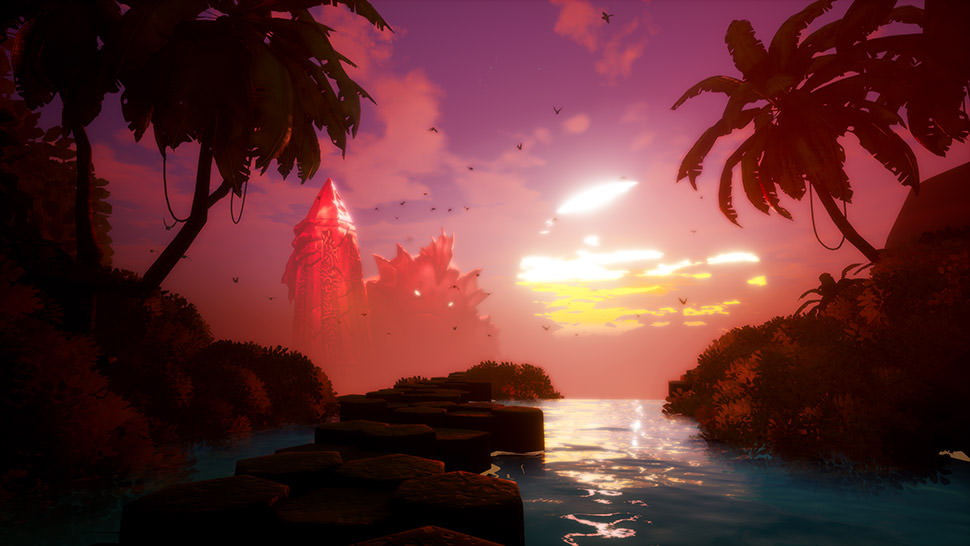
The old vernacular aside (I'm pretty sure I remember hearing the phrase "good show, old boy!"), the game is a straightforward, fun playthrough. You're Norah Everhart, a seemingly well-to-do and educated woman from Colorado, long-suffering from some mysterious illness that has caused you no end of troubles and seclusion. Your husband, also educated and well-to-do sees himself as the intrepid adventurer and stops at nothing to find a cure for your mysterious illness. He sets off on an expedition sometime before the start of the game, leaving you alone without much indication of what's happened to him. Using what info you have, you set out to find him and whatever cure he's hopefully discovered.
The game looks gorgeous, even without HDR support. It felt very akin to Rare's version of piracy in Sea of Thieves, but I thoroughly enjoyed the island jungle setting's vivid brightness. Somehow it made the game just pop more throughout the experience. Most games that dance around a Cthulhu-esque experience end up being dark, depressing, and set in the dreariness of New England. Call of the Sea eschews all of that and brings players to a bright, tropical experience in the South Pacific. There's still your fair share of darkness that creeps in, but it just felt so much different amidst the game's stylings.
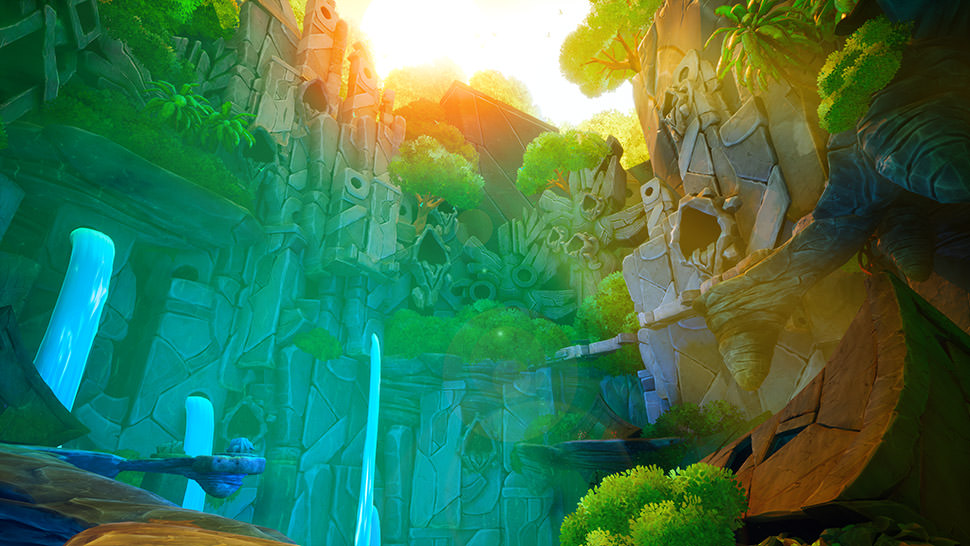
The simplicity of the gameplay itself – interact with A, use the right stick to move things around to find potential clues, use the left stick to change puzzle selections – makes the core focus fall on the puzzles and not on getting around the island. Thankfully, as well, the game offers you a "run" button that speeds up Norah's movement. She's not really running, but it at least makes her a bit more mobile than her slow walk. I only wish I did not have to toggle it by either clicking the right stick or using the right trigger; given how slow she was without, it should immediately have become the default once unlocked.
The puzzles are not generally challenging, but they do offer some definite opportunities to flex your brain. I say that because they at least vary in intensity – some will take some time to solve, others will be more straightforward. I was actually pretty thrilled at the puzzles' variety since some took more creative thoughts while others were a quick "oh, I should have looked at the back first" scenario. That was at least until chapter four, where I was just unable to wrap my head around some of the puzzles after a couple of hours of trial-and-error. But they're fun, they do challenge you, and they expect you to take some time to look around you. That's the critical piece – on top of helping unfold more of what's occurred during your husband's adventure, you build a better sense of the people he was with, the challenges they faced, and ultimately what happened to them. This is also all chronicled in Norah's journal (on top of any clues you find), giving players a chance to read up on her thoughts about everything she's discovering.
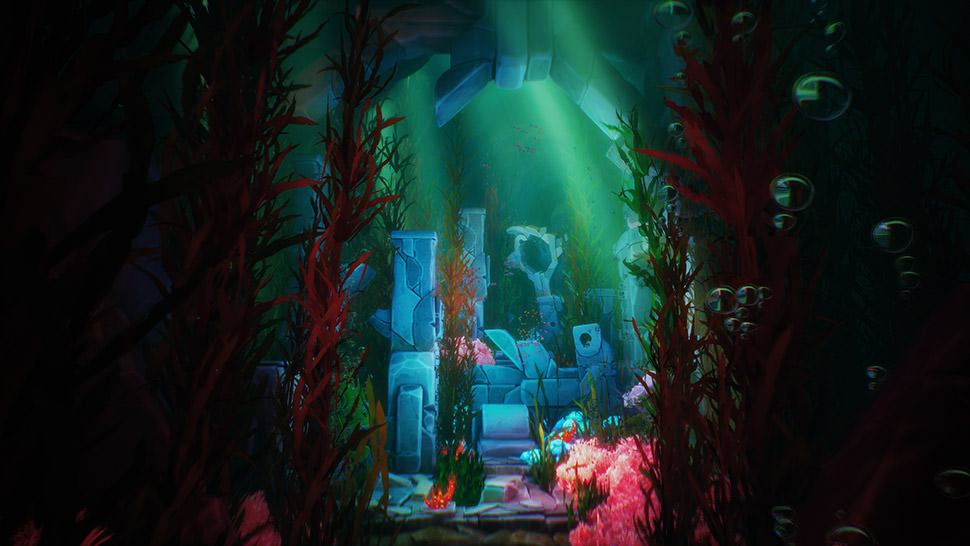
Most puzzles are about getting all of the pieces through creative methods; look around, touch all objects, make sure you're putting your notes into your journal. From there, it's just rearranging those pieces into a method that makes sense of the madness around you. In some cases, you won't know you have all of the pieces for a puzzle until after you return to a spot within your current chapter, making it worthwhile to make sure you complete all of your exploration and examination. It reminds me a bit of old puzzle adventure games, like Myst, where the answer isn't always right in front of you but instead hidden around you somewhere.
Simply Put
I think Call of the Sea has something to offer a variety of gamers. The puzzles are fun, challenging, and genuinely make you learn more about the world around you and Norah's personal challenges. On top of that, learning more about Norah herself and what has caused her illness is a huge draw – it's one of those mysteries you want to figure out more and more as things progress. The bright, popping visuals and simplistic gameplay all tie this into a pretty good bow for those who want to give it a shot.
]]>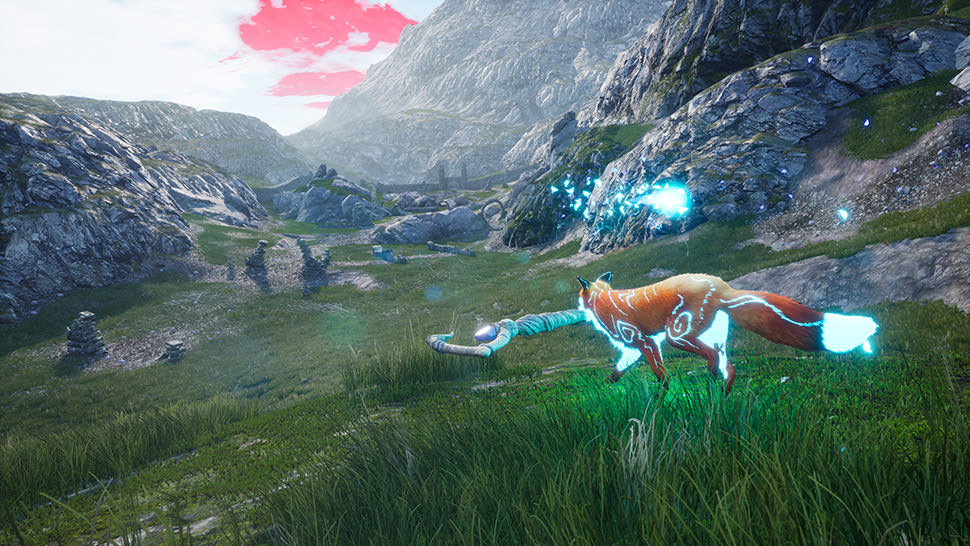
You begin your journey wandering through snow-covered mountains. However, without a single line of dialogue, a force drives you towards the red sickness or corruption emanating across the sky. After an incident leaves you limping through icy underground caverns, you'll learn world lore through glowing pictographs, illuminated by the Spirit of the North's energy. An unknown civilization thrived as the spirit fox protected all life surrounding the mountains until a monolith (I think) sought ruin, causing a volcano to erupt, trapping the guardian in a deep slumber and destroying the surrounding villages. Perhaps society began to worship the glowing red monolith instead, sending the guardian to be forgotten. Without narration or lines of dialogue, it is certainly left open to your interpretation.
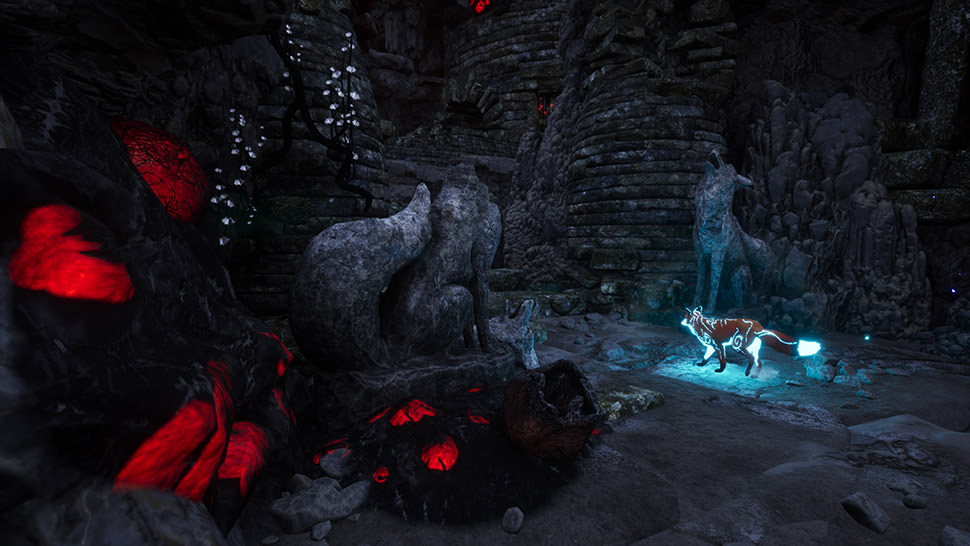
Sacrificing themselves to save your life, you are imbued with the powers from The Guardian of the Northern Lights to cleanse the land from corruption. Along the way, you'll come across remnants of the lost civilization, reuniting shaman bodies scattered throughout the chapters with magical staves, releasing their souls and allowing them to rest peacefully. Now only a floating spirit orb, the former guardian serves as a mentor, guiding you throughout the visually impressive environments. There's no mini-map or anything to follow, but visual cues help guide you along. You'll solve environmental puzzles without combat, either by instilling relics with the powers of light or matching symbols carved into stone statues.
Spirit of the North Enhanced Edition can be completed around the five-hour mark, but as you progress, you'll learn new powers requiring the use of spirit energy. The energy can be found throughout the game world from blue flowers, letting you channel it inward or release it into relics that open blocked passageways, or activate an ability such as entering a spirit form and running across flowing water. Besides the powers, you can run, bark, and jump, but the movement feels imprecise. With the amount of platforming required, you'd have thought that jumping would feel better. You'll occasionally slide off edges or be blocked by invisible barriers, but wandering around with the atmospheric orchestrated soundtrack is awe-inspiring.
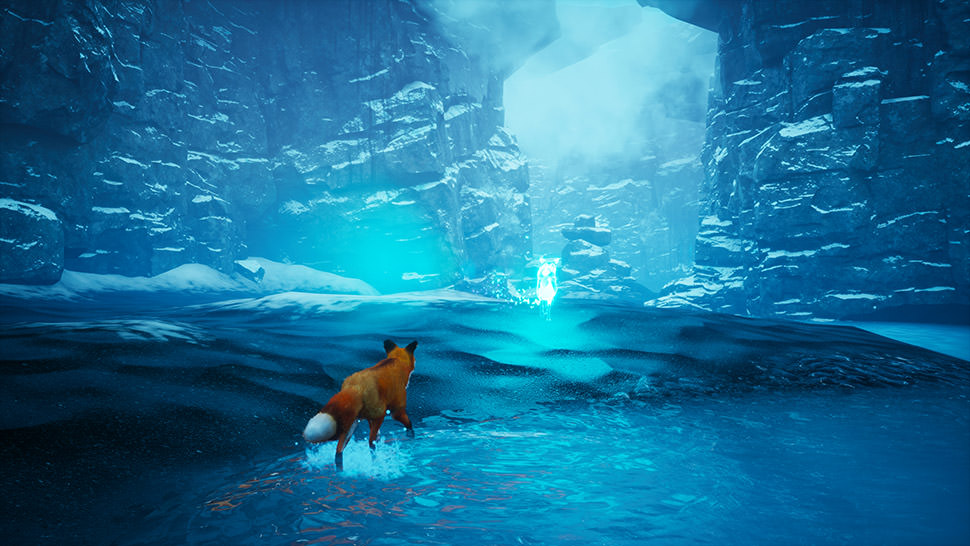
Simply Put
Spirit of the North Enhanced Edition is a visually impressive narrative experience that foregoes dialogue for atmosphere and world-building. The game is simply beautiful and runs smoothly; however, the gameplay should have been tweaked with the PlayStation 5 release. Occasionally, it is unclear what you need to do, or the imprecise jumping can cause you to backtrack needlessly. It's a solid platforming adventure that successfully tells a tale through pictographs and gameplay.
]]>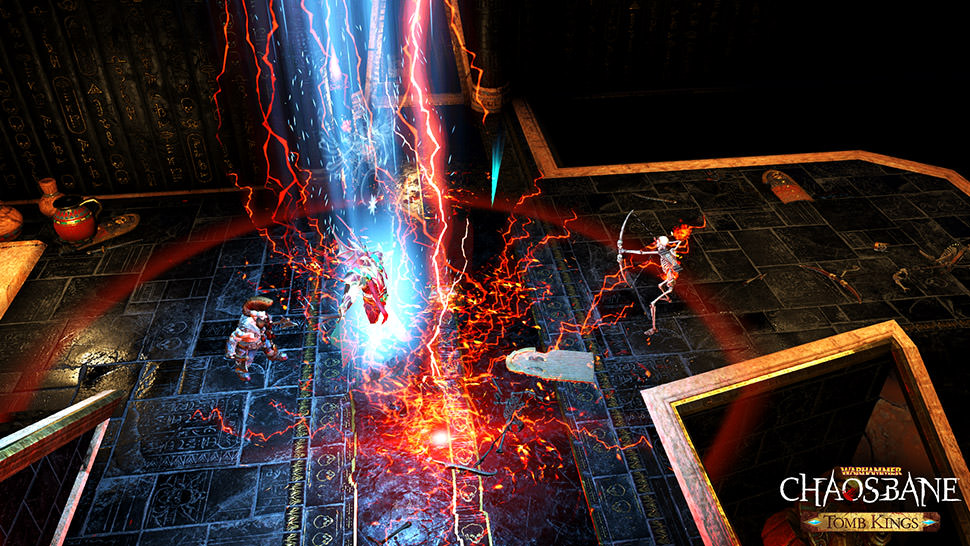
Optimized with co-op in mind, the game supports up to four players locally and online, as players must slaughter the daemons of Chaos, develop their characters, and work together to save the Empire. The Slayer Edition brings over a year's worth of improvements, enhancements, and post-launch content, including the Tomb Kings narrative expansion and the newly released Witch Hunter class. Be prepared to purge Chaos from the world.
We've already reviewed the base game (read through for in-depth game mechanics), thanks to Marcus's deep knowledge of everything Warhammer, calling it "an unabashedly fun title." As an isometric action RPG, Chaosbane is filled to the brim with gear, loot, and dozens of foes charging towards you at any given moment. When creating a new character, you have the choice to start playing any of the three included story arcs: the original story starting in Nuln, the paid Tomb Kings expansion, and the free The Forges of Nuln chapter.
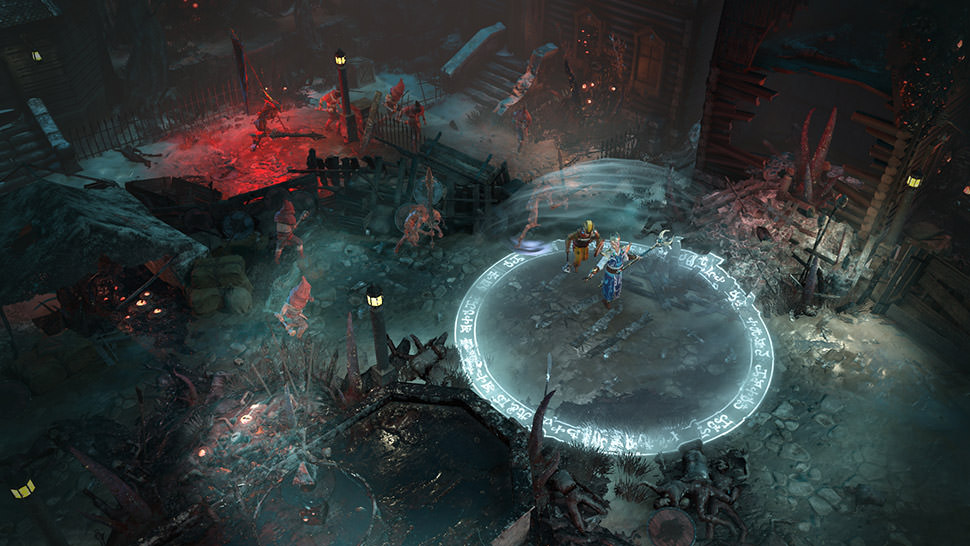
For this reason, I recommend sticking with a single class, at least until you finish the tale, as playing through the same quests on every class is tiresome (unless you are looking to unlock trophies). Through randomly generated levels, players can team up with others to journey within challenging expeditions. The time-sensitive boss rush mode tasks players with eliminating the bosses fought through the narrative, which are quite impressive and the highlight of the game. In contrast, relic hunt adds dungeons with numerous difficulty levels to earn powerful heroic gear sets. The inclusion of the Tomb Kings story content takes players to the golden deserts of Nehekhara and away from the infested sewers of Nuln, the ruined streets of Praag (the Cursed City), and the frozen Norscan peninsula.
Unlike Marcus, who purged numerous daemons with his dual-axe dwarven slayer, I chose the game's sixth class, the Witch Hunter, to dish out my form of judgment upon the legions of Chaos. With his pistols and rapier, you're capable of trapping and slowing down heretics at range and finishing them up close. The hybrid range/melee approach fits well with my playstyle and effortlessly synergizes with all existing classes.
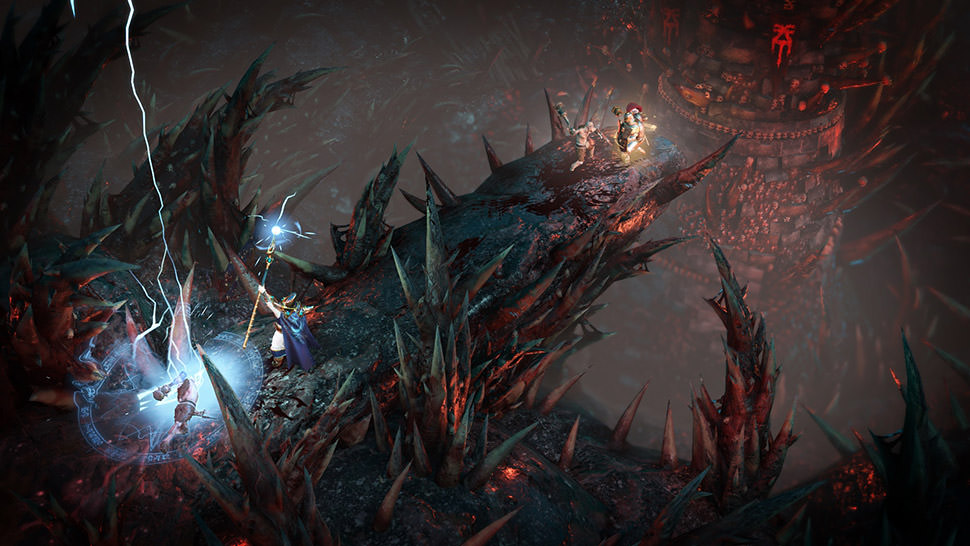
The normal difficulty is a bit of a cakewalk, as long as you don't become overwhelmed by 30+ cultists or daemons attacking you simultaneously, along with elites. You need to spend gold or fragments to revive on the spot or restart from the beginning of the current dungeon if you perish. As you increase the difficulty, the percentage of loot quality, extra gold/fragments, and experience bonus also increase, providing a risk vs. reward factor. Once you unlock the chaos difficulties, that's where the game's cooperative nature truly shines. Fragments drop almost as frequently as gold and are used to bless items, providing further stat bonuses, depending upon what colors are used. For example, a stack of green fragments can add a plus to your maximum health, while blue fragments add armor bonuses.
Loading times are virtually non-existent, thanks to the power of the PlayStation 5. At most, you'll be waiting three seconds for dungeons to load, but moving between zones within a dungeon is instantaneous. The three narrative activity cards are designed to let you quickly pick up exactly where you left off in the narrative, regardless of what campaign or chapter you are currently playing, loading directly into the game with your previously last used character. Additional ones unlock as you unlock each mode meant for end-game content.
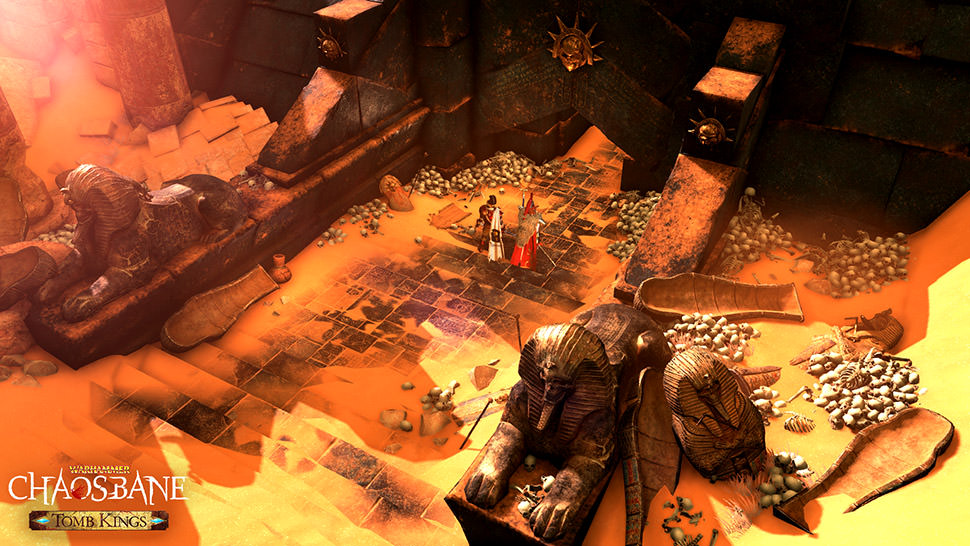
The DualSense controller's adaptive triggers provide an enjoyable sensation for the two skills tied to the left and right trigger. When on cooldown, both triggers provide resistance, making it much harder to squeeze. As soon as the skills can be activated, the resistance is removed, and you can easily use your skills. It's a small touch, and although it's not as satisfying as the haptics from Astro's Playroom, it is appreciated and hasn't gone unnoticed. The game's visuals look incredibly sharp, running at 60 frames per second, even at 4K.
Simply Put
Warhammer: Chaosbane Slayer Edition is the definitive action RPG experience on PlayStation 5, with plenty of narrative content, loot grinding, and dungeon crawling. The game looks stunning, especially at 4K resolution, and runs incredibly well on a PS5 with minimal loading. The adaptive triggers are a nice touch but don't take full advantage of the DualSense functionality. Currently, there aren't any upgrade paths for those who previously owned the game to the PS5 Slayer Edition besides spending $60 to repurchase.
]]>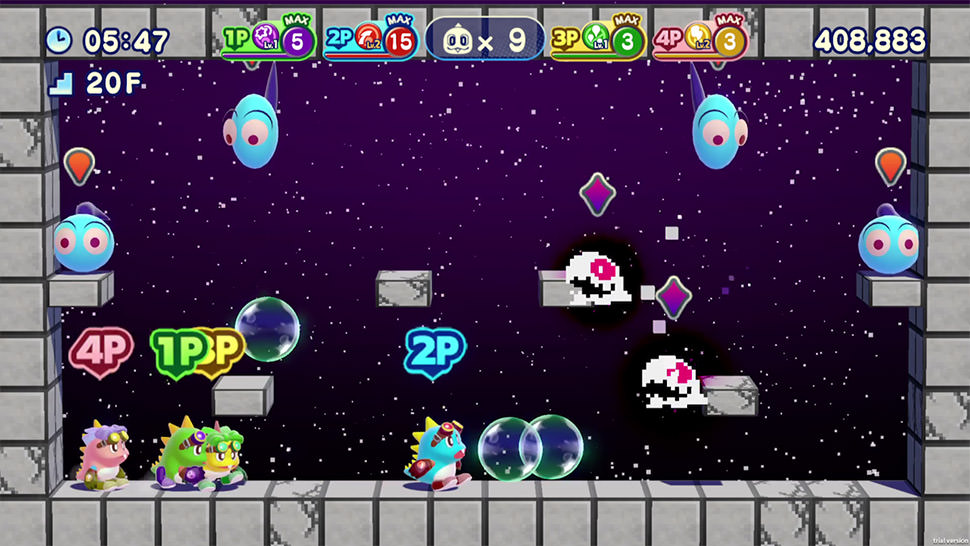
Taking place in a child's bedroom, Bubble Bobble 4 Friends: The Baron is Back! takes you across five areas, each with ten stages, with the final stage pitting you against a massive boss with special abilities thanks to Bonner. Each stage typically takes around a minute or less to complete, so you'll breeze through all 50 stages on the normal difficulty in less than an hour. Once you've completed the first set of stages, hard mode becomes available, remixing the original stages with always "angry" bullies. The core gameplay of Bubble Bobble remains intact. Players must shoot bubbles to trap enemies inside, then burst them either by using spikes on their back or stomping through. When multiple bubbles are touching, bursting starts a chain reaction, bursting all nearby bubbles and providing a score boost.
Bubbles float thanks to air currents, which were invisible in the original arcade game; however, this sequel provides visual indicators, ensuring you know precisely where trapped enemies and empty bubbles will end up. For the purists out there, you can turn off all visual assistance or make them more subtle. Considering the stages are built for verticality (every stage only takes up a single screen), you must ride bubbles upwards to reach new platforms. Defeated bullies turn into food in the form of fruit, giving you a set amount of points based on the number of enemies bursting in a single chain. You'll also replenish the uses for your selected skills, which unlock by defeating bosses. As long as you quickly finish stages and chain multiple enemies together, you can raise the amount and type of delicious fruity desserts that appear after completion. There is a tiered ranking for the fruit, with bananas being the lowest and watermelon, grapes, and pineapple being near the top. Get proficient enough, and you'll earn shiny gems instead, but that's only for those who have mastered Bubble Bobble (not for me).
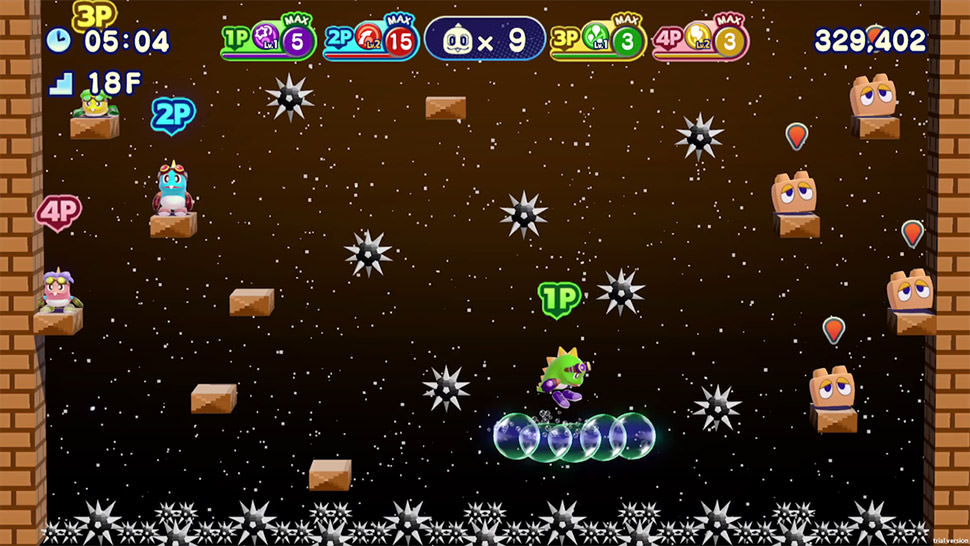
Instead of picking up magical items that randomly appear while playing, you'll unlock them by defeating bosses. These skills can be equipped but have a set amount of uses and must be replenished by defeating bullies. These abilities are based on each boss's powers, such as shooting bubbles further, thunder bubbles that send out a horizontal shockwave, and even an exploding time bomb bubble. Trapped enemies float around the stage based on the wind direction but become free and angry after a short time. Angry enemies are far deadlier, with faster movements. The stages are designed using both transparent and solid platforms, with the difference being that the former can be passed through only. You're also able to crouch and squeeze through tight spaces to reach enclosed areas, but you cannot shoot bubbles while crouched. Later levels become less free-flowing and more maze-like, with only a single path to move through. Not only that, but dangerous spikes are added, killing you with a single touch; however, strangely enough, they don't pop bubbles.
Scattered throughout the nine platforming stages in each area are the letters E-X-T-E-N-D, although only one letter appears in a stage, unlike the original arcade game. You'll get a bonus life for collecting the letters, and completing the word extends (get it?) the number of uses for your skill. As you may expect based on the title, the game supports four-player local multiplayer. However, all players share the same pool of lives and score; instead of instantly dying like in single-player, getting hit traps you inside a bubble. Your partners have a brief moment to burst the bubble, ensuring that a life isn't wasted. Given the linearity of some of the stages, things become quite chaotic as four players blow bubbles simultaneously in tight corridors. Improving the accessibility of the game series is the inclusion of an invincibility option once you see the "game over" screen three times.
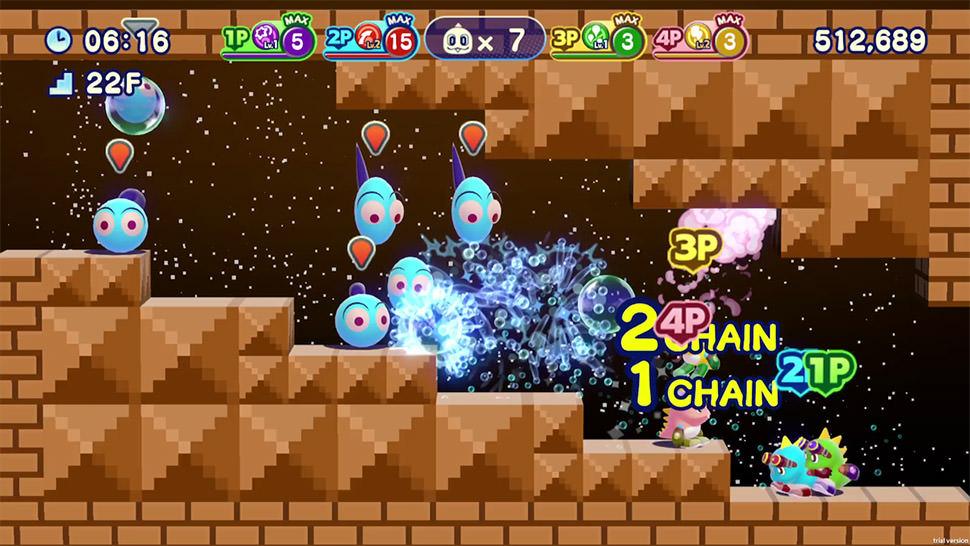
Simply Put
Bubble Bobble 4 Friends: The Baron is Back! is a fun four-player multiplayer experience, with 200 stages to complete with the cutest arcade characters of all time. There's even the option of playing the original two-player 100-stage arcade release. The new area that features the invincible Baron and no continues replaces the standard arcade machine once you unlock hard difficulty by completing the first fifty stages. Online ranking for every area is tucked away in the options menu, letting you compare high scores across the globe.
]]>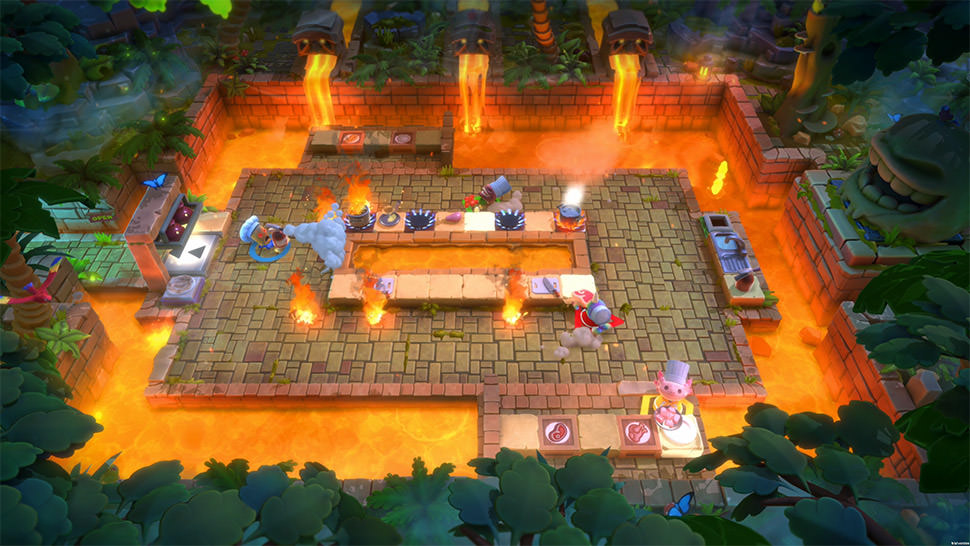
Overcooked! All You Can Eat is the definitive way to experience the blessing of cooking together with friends under pressure, except this time, both games can be played via online multiplayer. This yummy package has overhauled both games and added some fresh content right out of the oven. Not only that, but the game includes every tasty morsel of downloadable content previously released and includes way faster loading times, remastered visuals, and everything runs at a buttery smooth 60 frames per second, even at 4K. There is even all-new content added exclusively to this release: three new chefs, seven new levels, and more. Accessibility options have been greatly improved, allowing even more players to join in the fun, like family members and younger audiences. The UI can be scaled (hooray for bigger text sizes); color blindness options and dyslexia-friendly text are viable options. If the frantic, anxiety-driven nature of having to work as fast as possible is too much, assist mode offers options for slowing down round timers, recipe timers, and even skipping levels.
Considering the original Overcooked! didn't have online support, it has been entirely rebuilt using the Overcooked! 2 engine. Both games in the definitive collection will support cross-platform online multiplayer in an upcoming patch. All of the characters (there are more than most fighting games) from all of the DLC and updates released over the years can be played across both games, giving players a massive pool to select their favorites. Want to play through the original game as a vampire or even a reindeer? Go right ahead. Arcade mode features two modes, co-op and versus, but both can be experienced locally or online (with random player support for online multiplayer). There are dozens of levels for players to vote on, each one with their own unique kitchen environment and recipe requirements, from sushi to thanksgiving turkey. However, the campaigns are limited to playing with friends, as you'll have to invite others if you wish to play online.
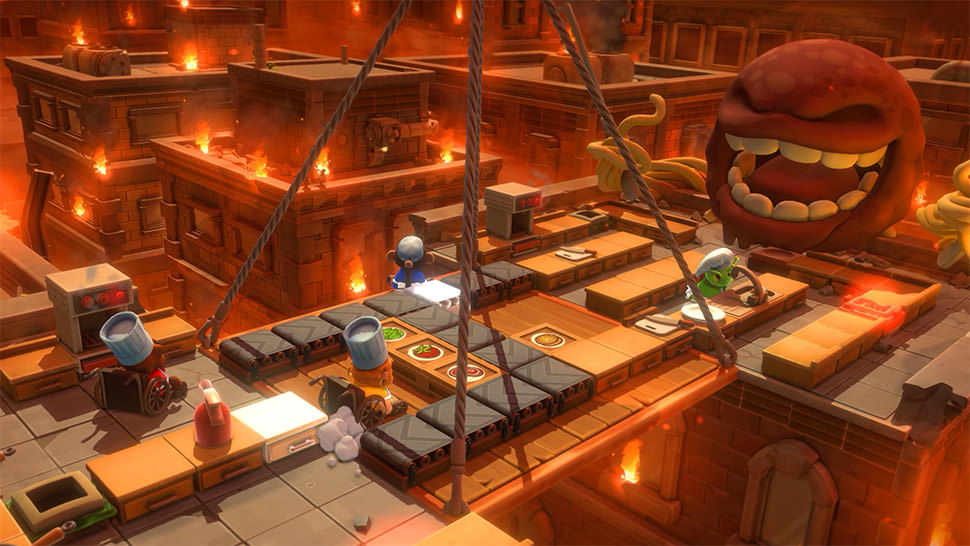
Like in the originals, if you attempt to play the game solo, you are simultaneously in charge of two chefs. At any point, you can click the right bumper to swap between either character, a necessity given some kitchen layouts are split in half, limiting the number of things a single chef can accomplish. It's much harder to play through the game this way, and honestly, after a single level, I realized just how much I hated playing the game this way. Thankfully, the game is still the king of couch co-op, and it wasn't long before Joan and I were back to getting three stars in each level in the campaign. Although someone inevitably slips up, and chaos soon follows, with incorrect orders being made, fires erupting, and everyone running around panicking as the timer counts down. As orders are received, the list of required ingredients for the customized order is directly listed. You may be tasked with making three salads in a row; however, one may include tomatoes, another may have cucumbers but sans tomatoes. Serving food with the proper customizations is vital to maximizing your score, which earns you stars. New levels during the campaign are gated by the number of stars you have, so you may have to replay levels multiple times in the hope of getting a better score.
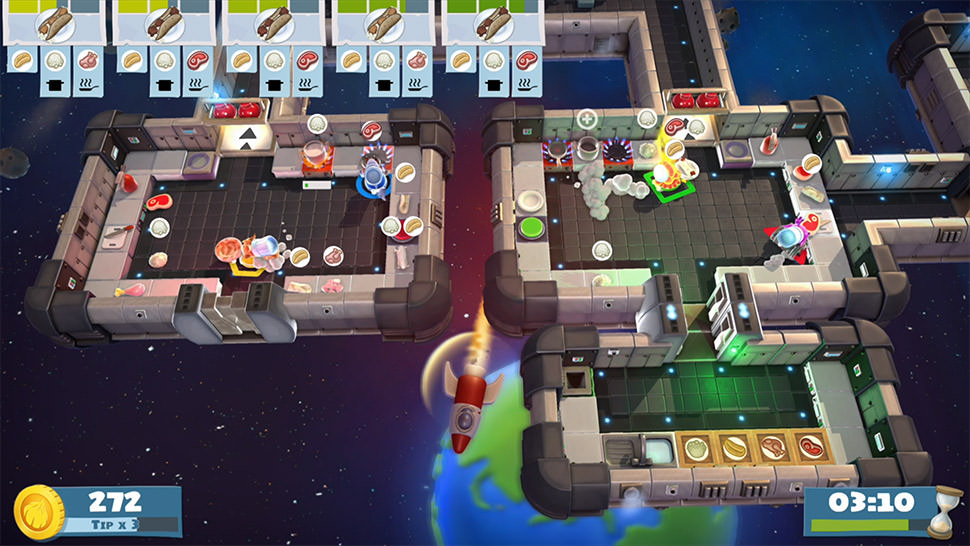
The kitchen layouts are relatively traditional and straightforward at first. Still, it isn't long before you're cooking on a swaying pirate ship or in a kitchen split across a frozen river, requiring you to rush across floating sections of ice. Regardless of the kitchen and any environmental hazards, including rats that love to steal ingredients, preparation needs to be prioritized. Every action has a set timer, from chopping to boiling or cooking. Do you risk a soup possibly burning to prep the next order's ingredients, or do you drop everything you are doing and rush to plate the item and send it out of the kitchen?
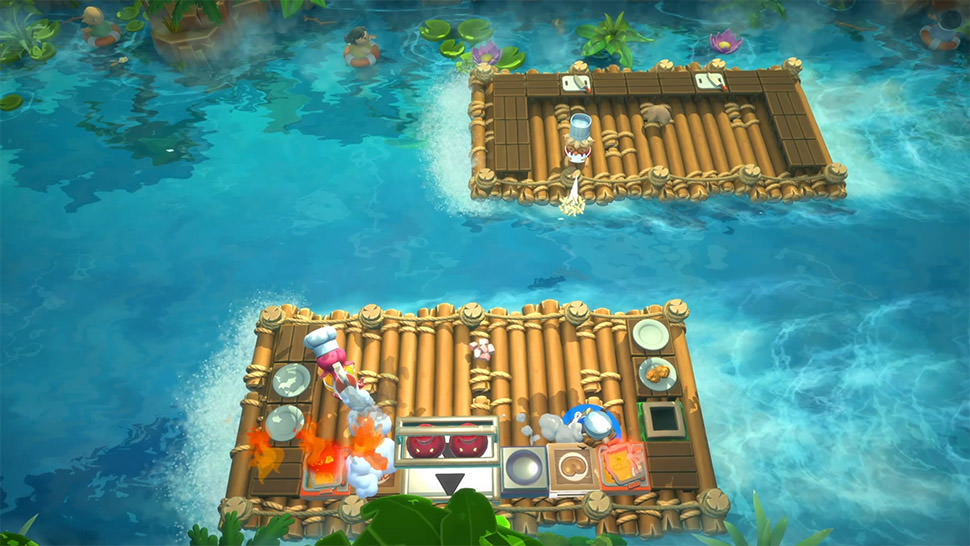
Simply Put
Overcooked! All You Can Eat is the definitive edition of two of the best party games released in the last generation. The next-generation release and the remastered visuals, new enhancements, and added accessibility options ensure that the frantic cooking experience can reach a wider audience. Although the original release has been rebuilt, Overcooked! 2 is still the only one that features throwing. It would have been nice to add the functionality, but it may have also required reworked kitchen layouts, considering how dynamic and crazy the sequel levels become. The new content is appreciated; however, it may be too little for those that have squeezed every ounce out of the games already. Online multiplayer and the promise of cross-play support certainly do sweeten the deal.
]]>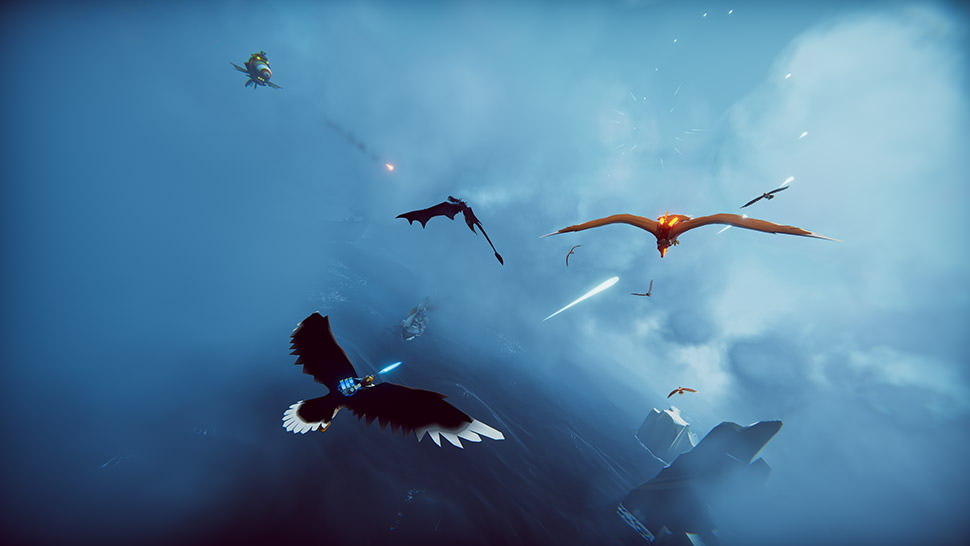
In a world where just traversing can seemingly be the most dangerous thing (I saw what looked like a giant, spike-armored whale snake leap out of the water, it's got to be dangerous in there), flying makes the safest sense in terms of getting around. Thankfully, I've been a big fan of flying sims or general "flying games" for most of my life. Sky Oddysey on the PlayStation 2 springs to mind as a prominent one, but that's just me dating myself a bit. The Falconeer puts you on the back of one of these birds, strapping guns and some ammo packs on there for good measure, and sending you off into the wild yonder without a ton of orientation. The tutorial is relatively useful, given you a chance to test yourself and how good (or bad) a pilot you might be.
That's not a bad thing, though; the world is seemingly massive. It takes some time to get around with some of the weaker/earlier birds, given their lower speed, but exploration is genuinely one of the best ways to understand the game. Stopping at different locations gives you a chance to buy items or upgrades or find additional quests to complete mid-stream (stuff you can do post-mission completion as well). You may also get an intriguing monologue from various characters, providing world-building lore, such as the creepy shaman/fortune teller woman about the meaning of the place. There's genuinely a massive world to explore, but once you've seen everything on the map, the excitement from the unknown is gone.
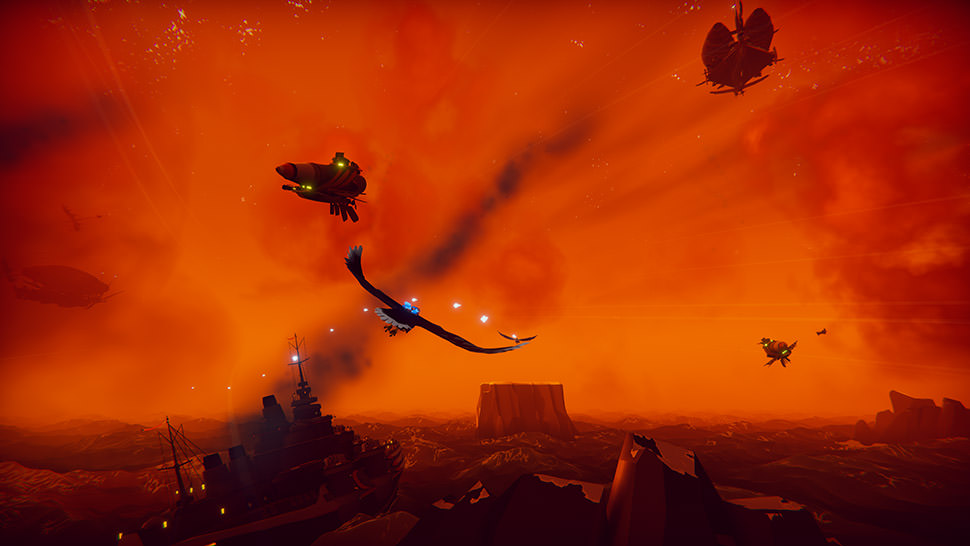
The Falconeer ends up, after a point, feeling very repetitious once you've managed to uncover all of the hidden must-see locations around the map. The gameplay loop is relatively basic; go to point a, kill some enemies, go to point b, ensure your weapons are charged, rinse, and repeat. Unfortunately, the exploration aspect wears out potentially early on unless you manage to hold off and focus only on completing the missions. Granted, the giant gaping hole in the middle of the ocean takes a bit of time to get an explanation, but beyond that, it's a series of small port towns, defensive structures, or old shrines. The story is your main draw, and you'll be sent off to be a mercenary for various groups, building your reputation, skills, and firepower over time. Much like how there's excellent world-building with lore hidden around, the game's story is very political – backstabbing, double-crossing, and a series of ever-escalating political intrigue.
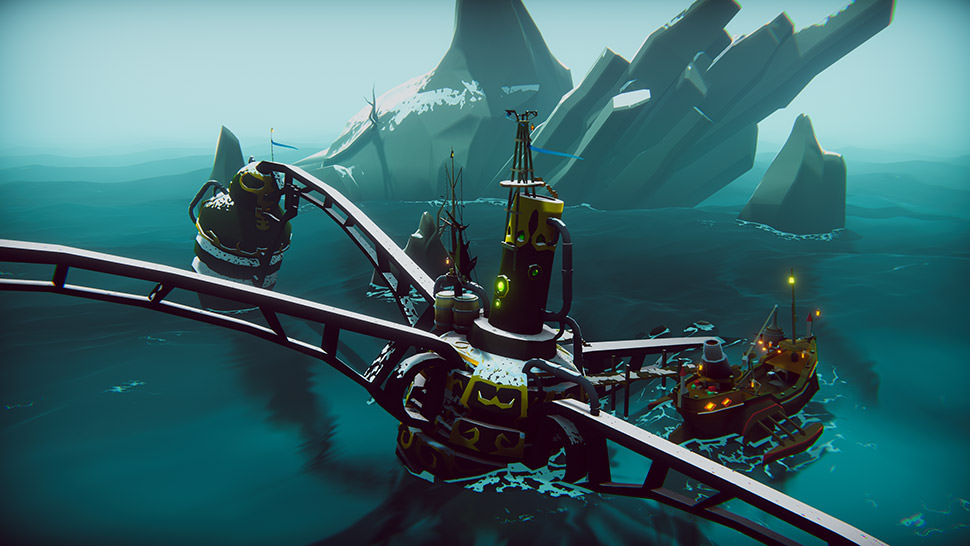
However, most of the story ultimately relies on combat—something which is both fun as hell but challenging and frustrating at times as well. The game revolves around you flying your giant bird around, engaging in aerial dogfights or strafing sea-bound vessels, targeting forward with your lightning cannon. It's all great in theory, and most of the time, it's excellent in reality. However, I found myself consistently facing difficulties maintaining a good bearing on my foes. Sure, yeah, it's a dogfight – barrel rolling and turning usually ends up being the norm. But I often struggled against the camera, and anytime there were more than four or five enemies up against me, I was quickly picked off from all conceivable angles. Encounters would generally devolve into spinning in circles, attempting to find an enemy only to be killed no matter how many swoops or maneuvers I performed. The game offers you the ability to lock onto enemy targets at the cost of losing camera control and any orientation of how you're flying. It can be almost nauseating if you try to do it for too long in the middle of combat, and it's one of the reasons I ended up not using the mechanic and hoping for the best.
Outside of combat, though, the controls felt very intuitive and similar to other flight titles. It was fun to work with the bird, climbing higher and diving back down to recharge my energy meter (part of what you use to speed up or do rolls). I could almost hear Peppy from Star Fox yelling, "Do a barrel roll!" as I effortlessly spun through the air, and just getting that speed up in a sharp dive was thrilling and fun. A bonus – to refill your ammunition, fly through an active thunderstorm and watch the electricity surge towards you. I mention all of this because, even as frustrating as the combat always ended up being for me, the rest of the game felt fluid and fun. Flying around, exploring, and learning about the great mysteries of The Falconeer while helping random passersby at least filled in some of the gaps created by the combat.
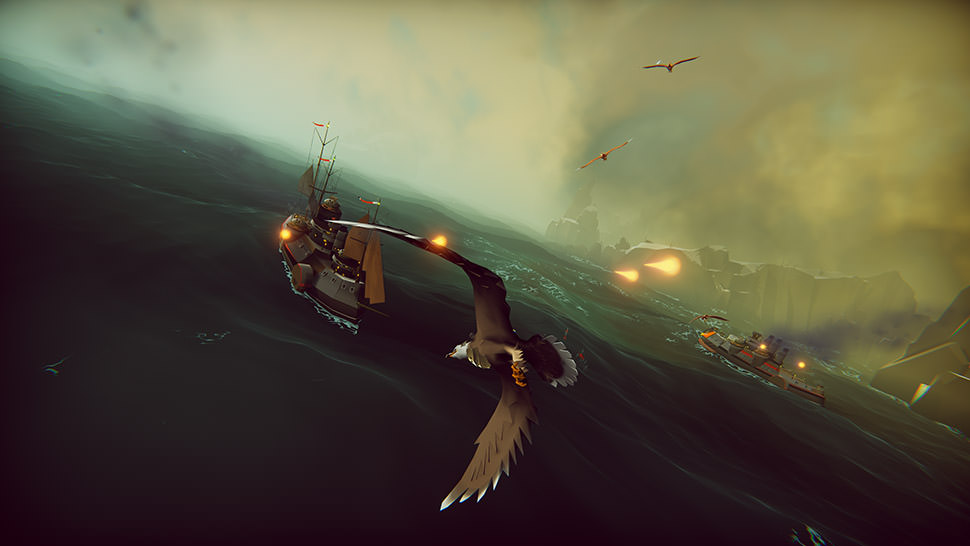
Simply Put
There's so much here to The Falconeer that I want to see more. The world feels very fleshed out and realized, the giant birds are freaking cool, and I'm still left wondering what the hell is going on with the woman glowering over my (maybe?) dead body between missions. I would love some tweaks to the gameplay and some chances to freely explore the world, but I feel pressured to complete the missions at hand, and I ultimately missed some things until I was a few hours into the game itself. It's great that the initial tutorial helps you get your wings, but there was a lot more I didn't know until experimenting around during missions. The history lessons I found, shopping opportunities, and side hustles are neatly tucked away, waiting to be unlocked by players that want to spend the time looking. But I worry that once those are dried up, the story (and combat) may not be enough to hold some through to completion.
]]>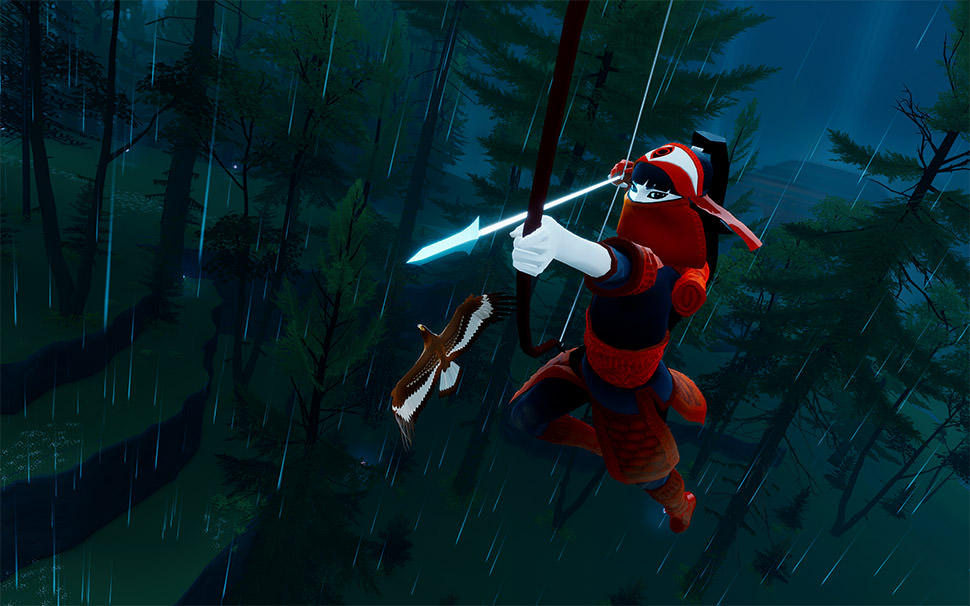
A mysterious evil demon known as "Godslayer" curses the land, corrupting the four beast spirits that protect the island in an attempt to gain immortality. Players take on the role of "The Hunter," a mysteriously blue-skinned individual with expertise in archery. After forging a connection with your eagle companion, you venture forth together across the expansive four open plateau regions that comprise the island without so much as a map. Your spirit vision highlights any corruption in red, providing you with clues on where you should focus next. Littered across the wilderness are floating talismans, which, when hit with an arrow, provide a slight speed boost while dashing and fill a portion of your stamina meter. Given the expansive nature of the game world, you'll want to be dashing through the grassy fields and snowy mountains continually; otherwise, it would take a long time to get around. Not only will you run faster, at least until your stamina meter depletes completely, but you can also bounce through the air by chaining talismans and soar gracefully using your majestic eagle companion. Eventually, you'll earn a set number of "flaps" for your eagle, with each one propelling you upward, giving you access to new areas.
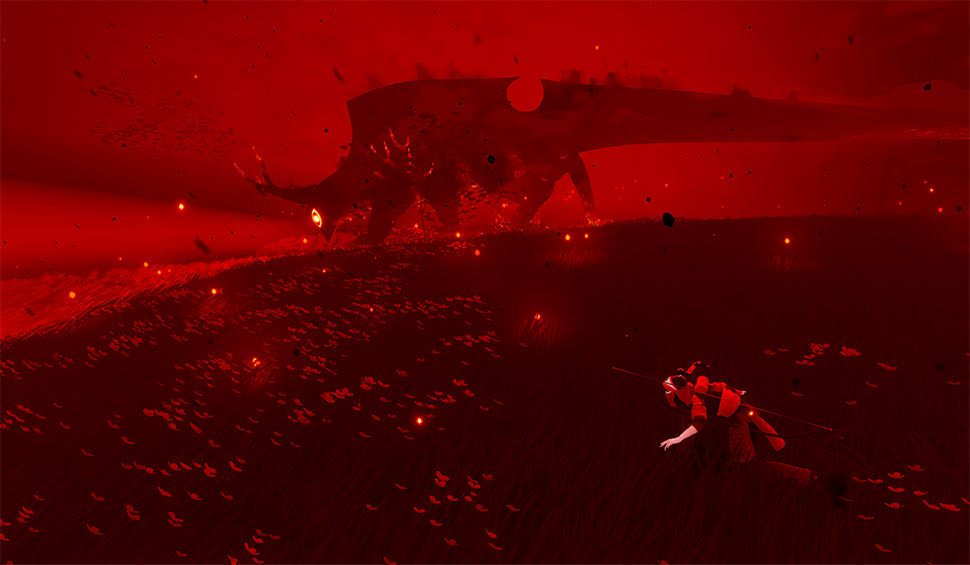
There's no manual aiming in The Pathless; you won't be hunting wildlife that roams through the land either. Instead, you'll automatically target the talismans as they come within range, making traversal an effortless and accessible process. The game's mood is one of darkness reigning over light, with a rampaging firestorm growing throughout each location. The first time the storm erupted, I found myself in awe at the size of the destruction, knowing there was nothing I could do to prevent the flames from scorching the world around me. If caught within the nightmarish hellfire, which erupts intermittently, you'll need to stealthily reach the eagle that has been ripped from your shoulder. During these sequences, one of the corrupted spirits hunts your location. Ensure not to move when caught within their gaze, indicated by a bright red light emanating from the beast's eye(s). If caught, you'll be attacked and lose crystals you've picked up to earn extra flaps of your companion's wings. Upon recovering your eagle, you are sent back and must wipe away all of the darkness on your companion. Seeing the nameless hunter and eagle meaningfully embrace after being reunited is heartwarming.
Scattered across each biome are three towers that must be cleansed by inserting several ancient relics. Once all of the towers are basked in pure light, they reveal the region's corrupted guardian, weakening it enough for you to hunt and dispel the curse. The majority of the environmental puzzles you'll find are entirely optional, as there are more puzzles than the number of relics required, but you'll gain an advantage if you complete them all. You must use your mind to deactivate the curse's shroud protecting the relics by solving puzzles and activating the talismans connected to them. Things start quite simple: stand on a pressure switch to reveal the necessary talisman that needs to be targeted with an arrow. As the narrative progresses, you are aided by your companion to maneuver weighted objects into position on multiple pressure switches, lighting braziers by shooting arrows through a lit one, firing an arrow through a set number of rings, and more. My favorite puzzles involve placing and rotating mirrors to ricochet arrows multiple times before hitting their target.
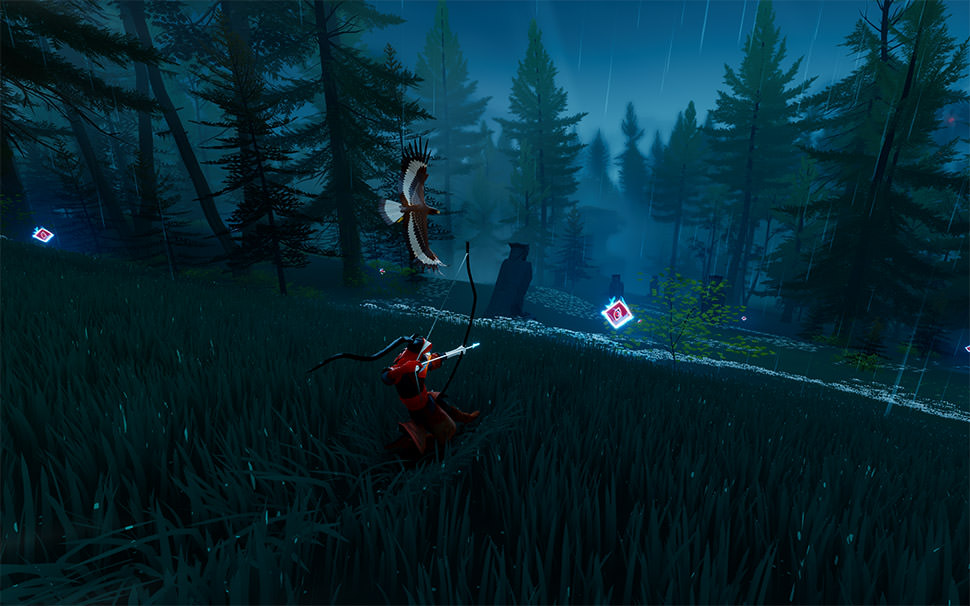
The boss fights begin with long-winded chase sequences through storms engulfed in flames. You'll need to perfect the art of dashing to keep pace with the speedy and massive corrupted spirits. Not only that, but the ground is covered in fire, and exploding fireballs are continually launched from the boss. Once you get close enough, you'll need to launch arrows at the talismans that adorn each side of the beasts. Afterward, you confront it directly inside an arena for a multiphase encounter, requiring the use of dodging, both on the ground and through the air. Some of the fights feature unique mechanics that require you to safely approach while avoiding deadly blasts. However, getting hit is only a minor inconvenience, knocking you to the ground or over the edge of the arena as you don't have a health bar. If you are struck multiple times, the game seamlessly repeats the current phase, so some fights feel extended. Strangely enough, I felt a constant sense of dread during the battles, even without fail states, resulting in some of the most thrilling boss fights I've experienced this year.
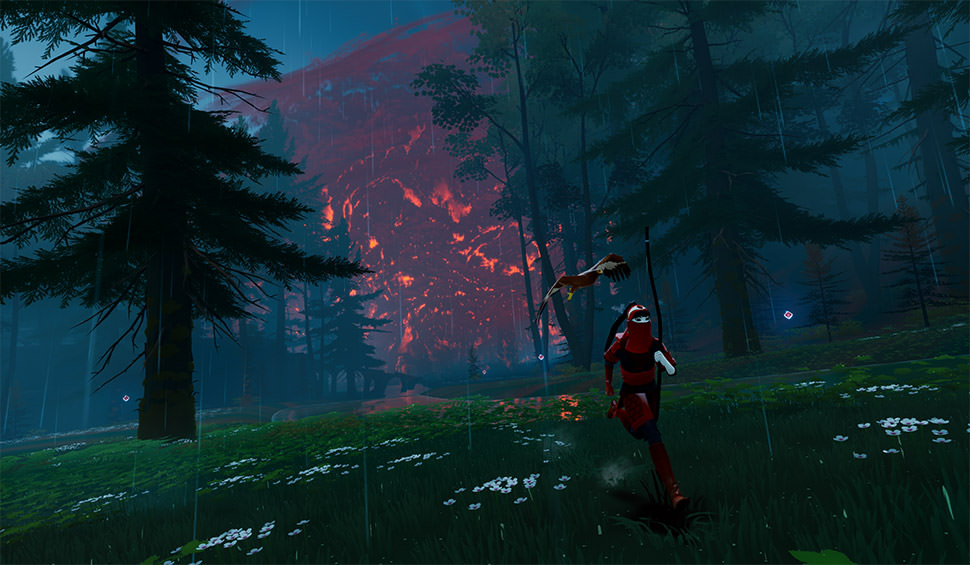
Simply Put
The Pathless is an open-world exploration title with unique puzzle-solving mechanics and one of the year's best soundtracks. The tense and enjoyable boss encounters were a delightful surprise. The free-form approach to exploration and plethora of puzzles to solve, even if most are optional, give you the sensation of freedom while traversing. It's simply fun, aimlessly soaring through the air with your eagle, bouncing across rivers and sliding down snow-covered mountaintops while shooting at talismans. It's not a long experience, as I clocked my completion time at roughly eight hours, but there are plenty of trophies to unlock by completing all of the puzzles, along with various other tasks.
]]>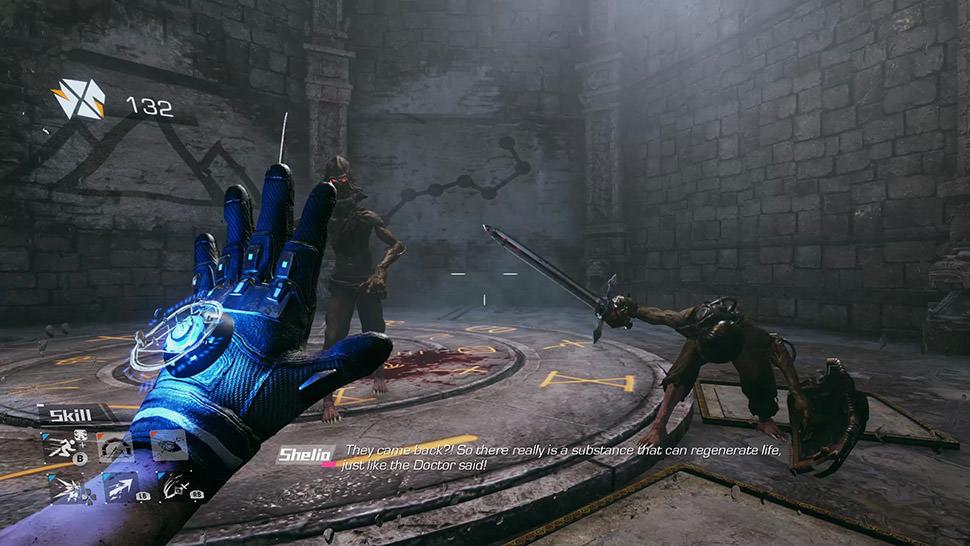
Bright Memory isn't necessarily a complete game; it is more like a prologue or first episode of an episodic adventure that won't ever be completed. Even then, there are so many questions and things left unexplained that anyone not following the game's background may think it is sorely incomplete. Players take on the role of Sheila, an agent of the Science Research Organization (SRO), tasked with preventing the evil mercenary organization known as SAI from taking possession of an ancient relic with the power to raise the dead. After a brief skirmish, everyone is sucked through a portal, sending you to an undisturbed island floating in the sky above the North Pole, full of the undead and mythical monsters.
You have two primary firearms: a machine gun and a shotgun, with a pistol serving as your backup. The focus of the combat revolves around performing stylish combos. Every combat encounter is graded based on your performance. In a similar fashion to the Devil May Cry series, you'll use your firearms to whittle away at your enemy's health before utilizing your abilities to launch them into the air and help you perform combos.
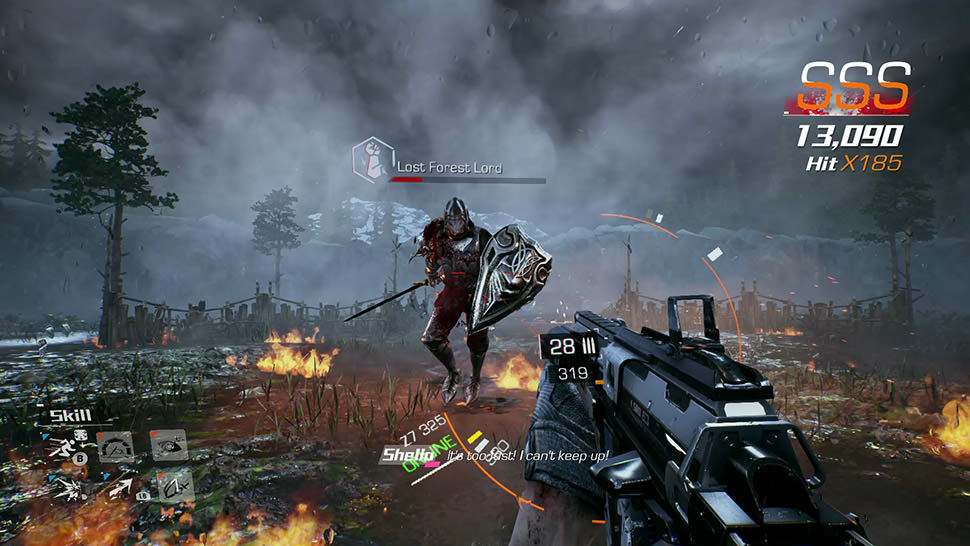
All of your skills and abilities are tied to cooldowns. Headshots do wonders at dealing additional damage and can save you in a pinch, but you'll need to manage Sheila's dodge, as you perish in only a handful of hits, even fewer when facing a boss. You'll want to use your EMP blast, which seemingly launches most foes directly in front of you into the air, leaving them in a temporary stasis. When this happens, leap through the air and use your energy blade to slash them to pieces. Your grapple ability pulls you towards a foe, although it also helps you traverse across the environment. The sword has three types of attacks: a rapid basic slash, a light burst, and a blast with explosive energy. The regular slash can be used quite a few times by mashing the right bumper, but the remaining two can only be used once per each activation of the blade. Once you start, the energy of the blade begins to dissipate and needs to be recharged.
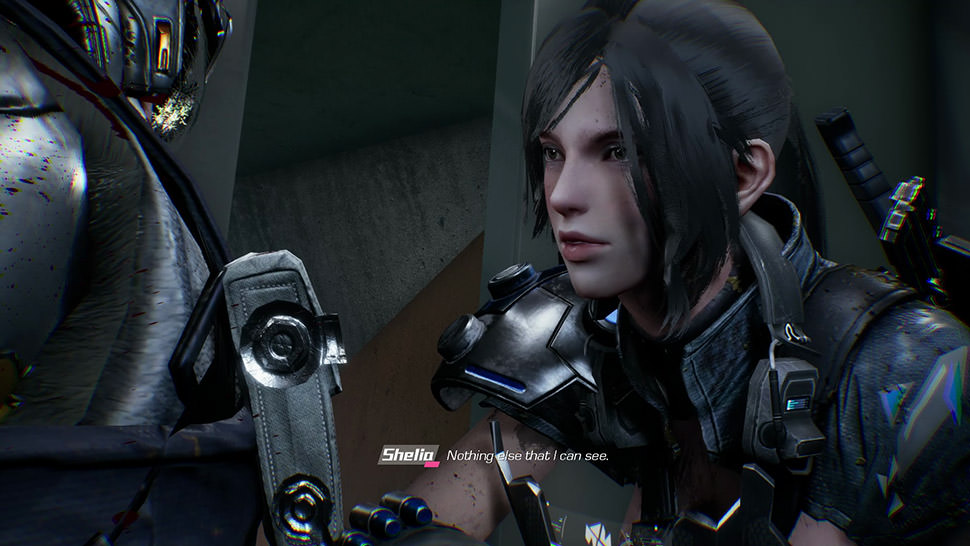
Your foes range from ghoulish undead knights to the mercenaries trapped with you and hellish creatures. Many massive boss encounters can kill you in only a couple of attacks, requiring you to learn attack patterns and time your dodges perfectly. As the fight progresses and you begin to chip away at their health, other foes will appear, requiring you to alter your tactics. You're not able to dodge through enemies, so getting surrounded is a death wish, especially considering you can't dodge forward, only in a 180-degree half-circle behind you. Just be careful; things can get disorienting as you try to maintain combos while shooting, dodging, and using your blade against multiple foes in first-person. In my playthrough, it led to a bunch of needless deaths. A couple of environmental puzzles are littered throughout the game, involving platforming and matching symbols using spinning rings.
Numerous games have employed a cursor-based menu system, but generally, they are still designed to work around console restrictions. In Bright Memory, it seems like the game was hastily ported, complete with some windows that still feature an "x" in the top right corner where you'd close it by clicking the mouse. Even the graphics options have been left in the game, letting you tweak things such as SSAO, shadow resolution, and even texture quality (at least the game defaults to "high"). I recommend turning on VSync, as the tearing is quite bad.
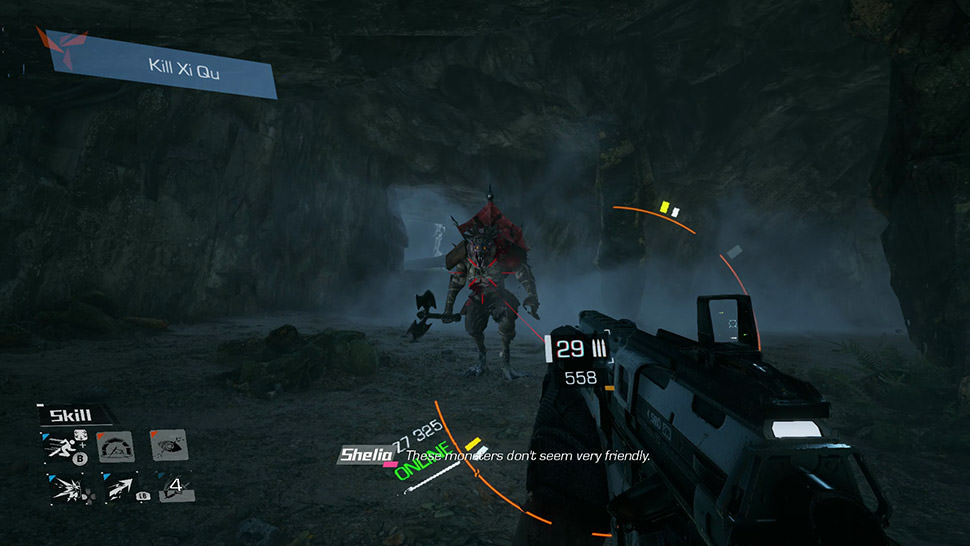
In one sequence, Sheila references "the doctor," but your guess is as good as mine on who that is. The default turning speed is beyond slow, but knocking up the sensitivity a few notches helps, though there aren't separate horizontal and vertical sensitivity options. You're meant to play through multiple times, giving you a chance to unlock all abilities by your third run. Once everything becomes unlocked, the combat does provide more options, such as using a time freeze bubble to keep foes frozen momentarily and a lightning attack. Many of the shortcomings can be overlooked, considering a single person developed the game, and it costs less than a combo meal at a fast-food establishment. Even so, there are a bunch of technical shortcomings with the release; for example, resuming the game from rest mode results in the loss of all sounds.
Simply Put
Bright Memory can be completed in just over 30 minutes the first time through but suffers from technical and control issues. It was designed as the first episode of many but comes across as an unfinished product or proof of concept, with pieces that seem ripped from other game series. There are even bonfires that don't seemingly serve any purpose, complete with a "bonfire lit" message when activated. The narrative lacks substance and any reasoning about why the events have transpired, unless you read through the game's description page, which features all the information you'd expect to find in-game.
]]>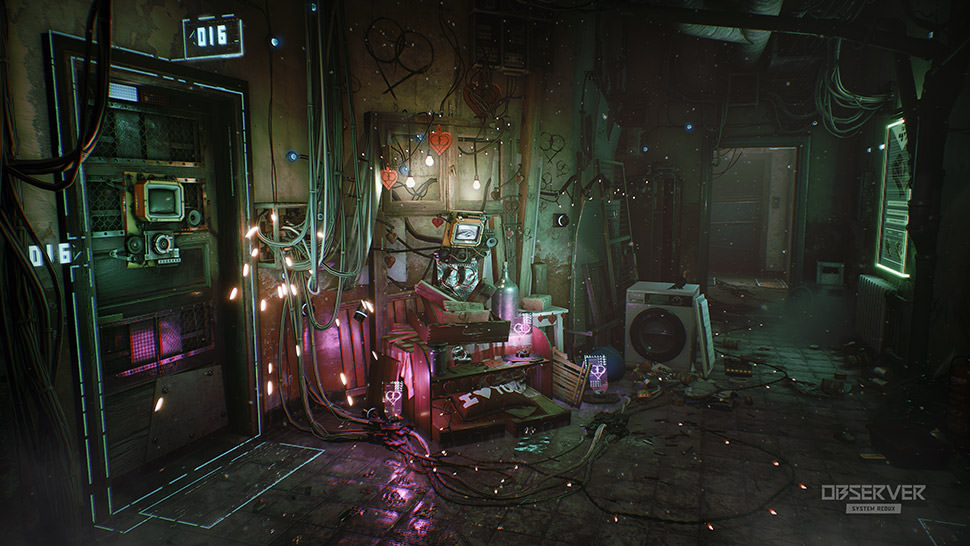
The most significant upgrade of the newly released remaster is the graphical overhaul, vastly improving the visual fidelity. It looks fantastic playing on an Xbox Series X in 4K. The lighting is outstanding, the environments pop, and some of the game's crazier aspects stand out more. Although it doesn't feel like a new game, the fresh coat of paint helps deliver the dark cyberpunk world in Observer: System Redux.
My only issue with some of these visual enhancements comes from the oversaturation of the neon-colored lights and gridlines around everything, especially during the opening hours. I legitimately thought the game was bugged after getting through the opening sequence. Communicating with the guy behind the front desk in the apartment building made me feel like the Matrix exploded into the game. I ended up deleting the game and reinstalling on my Xbox Series X, but it turns out it is an artistic choice from the developers. It reminds me of the moment in Jurassic Park, where Ian Malcolm (played by Jeff Goldblum) chastises John Hammond and his scientists for not thinking of the consequences of their actions. Every other aspect of this game looks exceptional, but the massive oversaturation of neon colors is just too much. Even further into the game, when my screen isn't completely covered in green, I see what appears to be graphical glitches at times. It's a bit frustrating and completely distracting, but thankfully it only lasts for so long in the beginning portion of the game and isn't nearly as prevalent later.
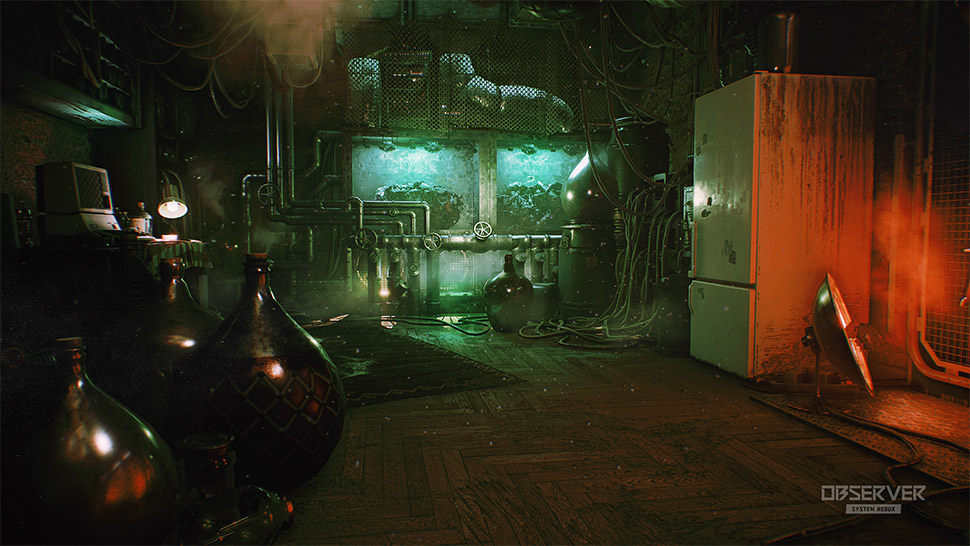
One of the differences I experienced the most from the PC version to the Xbox Series X was the control differences. The controller felt very intuitive, but the game's interface seemed to have more "drift" than I remember having on PC. In one segment, I had to hunt for radios and manipulate them. The on-screen dot was particularly useless as I had to move my screen just a bit to the right to have a shot at interacting. The same goes for most other things I was trying to examine or manipulate as well – nothing felt entirely on center.
There's expanded narrative content through new side cases for you to complete as you make your way through. There's even a secret tribute to Rutger Hauer tucked away in the game, which I won't spoil. The core gameplay experience stays the same, however, there are plenty of tweaks and improvements that have been made. The enemy AI during the stealth sections have been improved, and the neural interrogations feel much better and have been slightly shortened. The additions still carry the overall creepy tone of the game and are quite fun.
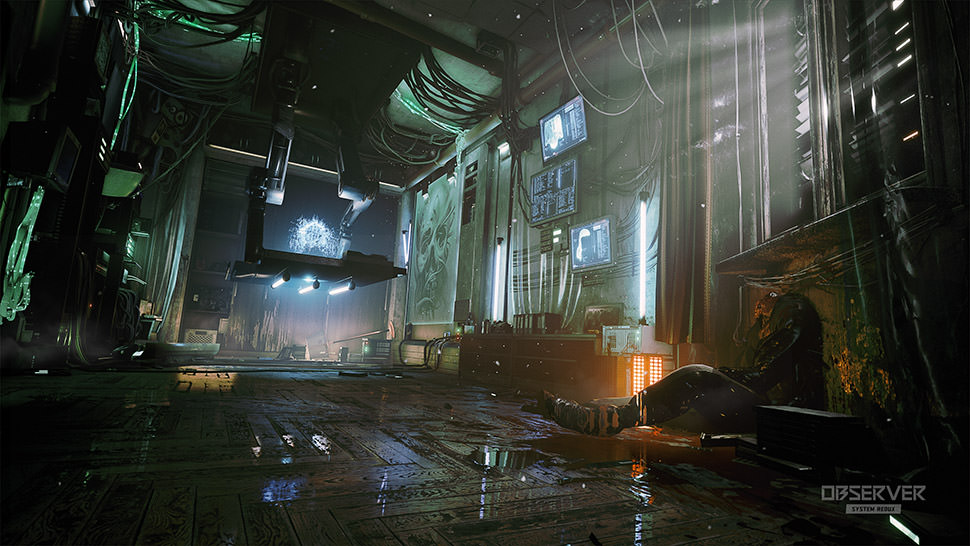
Simply Put
Observer: System Redux remains a solid experience, but with more content and much better visuals. The oversaturation of neon lights is a bit much, but otherwise, the game is still the same great product I played a few years back. I enjoyed the additional content and graphical overhaul, neon lights, and all. This dark sci-fi noir game (still starring the late, great Rutger Hauer) continues to capture the imagination as you trek your way through the mystery of your son's death.
]]>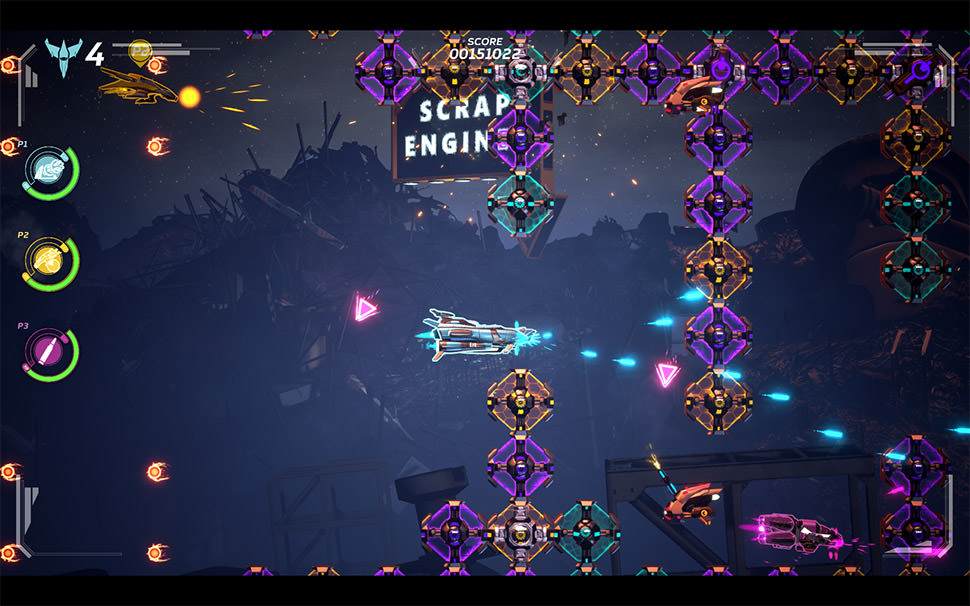
Typically, in traditional shooters, the only thing you need to avoid is the onslaught of projectiles and occasionally funnel through deadly environments. Instead, Galacide puts you right in the middle of a bullet-hell shooter surrounded by a colored tile-matching nightmare. You must keep an eye on the scraps that slowly move across the screen from defeated enemies, using them to deactivate groups of like-colored tiles. Sure, the bomb pickups can destroy large chunks of the Bitwall, but you are frequently dealing with finding the best path through the maze-like barriers, deciding which color should take precedence. The game's boss battles generally focus on shooting; however, one, in particular, requires you to shoot similarly colored scraps into the boss's belly, exposing its weakness.
There are four ships at your disposal (the standard mining ship, sturdy freighter, speedy phase ship, and mighty military ship), with three of them unlocked after completing specific objectives. Each ship comes equipped with a unique ability and stats across three categories: speed, firepower, and health. For example, the mining ship excels quite well in firepower and speed but is not the toughest. However, its unique power ensures that it is more than capable of getting through the entire game. Using a tractor beam, it can pull necessary scraps towards your ship. The freighter forgoes the tractor beam and, instead, stores scrap in its hull. Not to mention, all of your stored scraps can fire upon enemy ships, boosting the inferior firepower from this ship. My favorite, the military ship, activates auxiliary thrusters to smash through enemies and bits, which comes in handy when you find yourself in some suffocating predicaments.
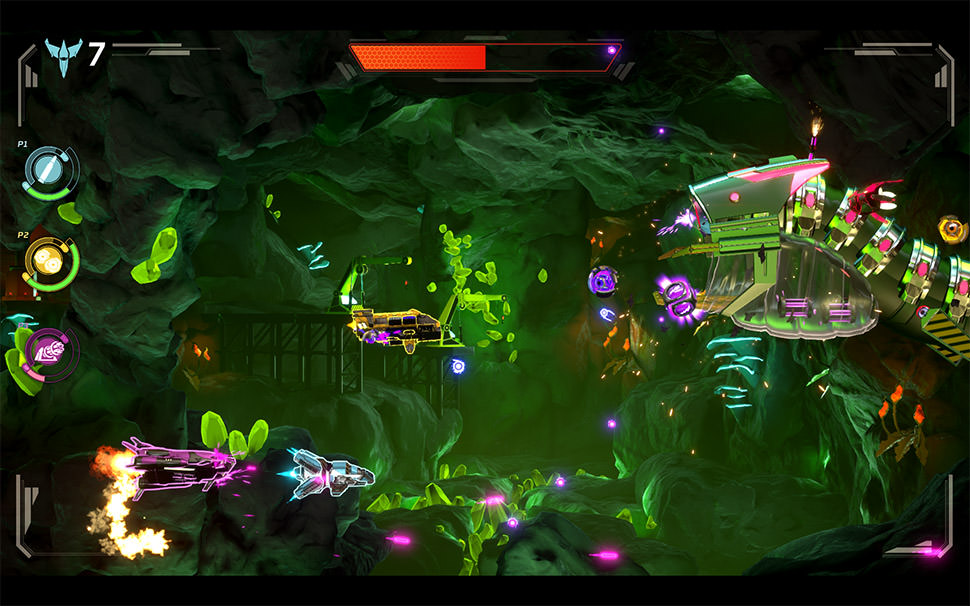
There are only six main locations in the story; however, the game does track high scores across all three difficulties: normal, hard, and expert. The standard difficulty serves as an introduction to the game, perfect for newcomers, but it is relatively easy to survive once you've mastered the core mechanics. As you progress to the next tier, enemies gain more health, and the scrolling speed increases, further decreasing the amount of time you have to get through the Bitwall. Expert, which has much more frantic pacing, was designed for multiplayer and shouldn't be attempted until you've completed the story on a lower difficulty.
An endless wave-based mode is unlocked as you progress through the narrative. Going far enough in this mode, reaching threat level six, unlocks the phase ship. But if you want to focus almost entirely on the game's puzzle aspect, the puzzle mode features twenty-five puzzles across five different categories. The basic one starts with simple color matching set across a single screen. Nothing fancy, but you'll need to think at least a couple of moves ahead to plan out the tiles' alignment. The rapid-fire puzzles were my favorite, manipulating the floating scrap placements to quickly fire multiple scraps one after another, ensuring they stack together to knock out various colors of the Bitwall before disappearing.
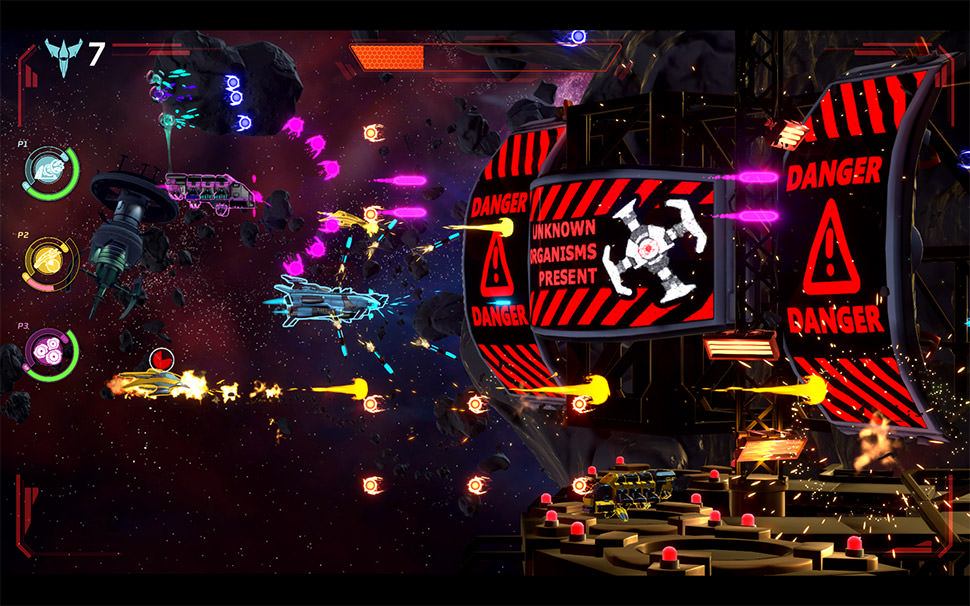
Simply Put
Galacide is an intriguing and unique take on the side-scrolling shooter genre. The addition of match-3 tile puzzle mechanics keeps you engaged and forces you to be mindful of your position onscreen. The expert difficulty proved too much while playing alone, but I had a blast with four of us frantically trying to survive among the chaos.
]]>Endzone: A World Apart is a post-apocalyptic world builder's dream. Think Civilization or The Guild meets Fallout. As survivors of the nuclear wastes, you're tasked with bringing your little group together and driving them to survive in the new, harsh landscape.
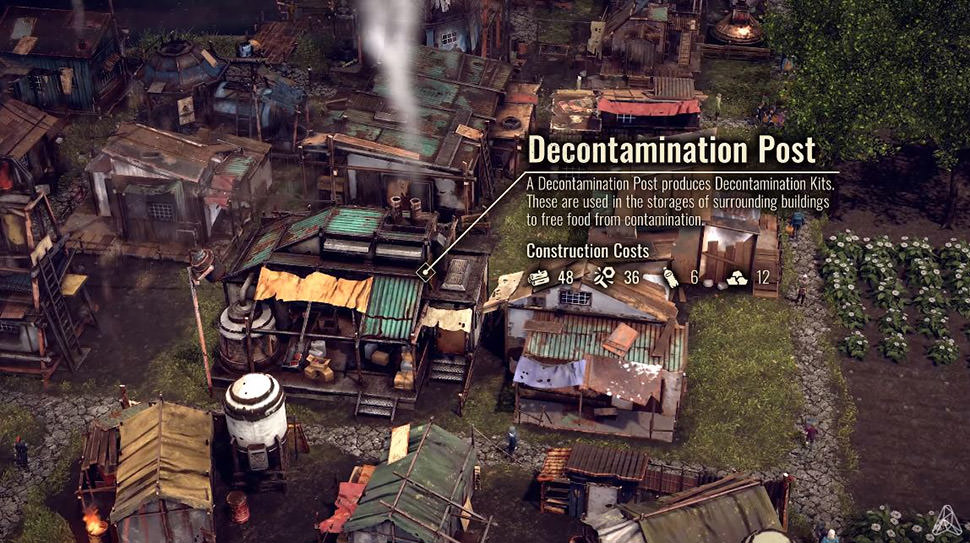
I readily admit I played the tutorial and still felt very overwhelmed even after a few hours. I'm not saying that's an issue; the vast set of options and opportunities within the game to manage a thriving settlement is fantastic. However: There's just so much shit in this game. That is honestly the best way for me to put this. It was somewhere during the third hour of the tutorial when I realized I had no clue just how deep this game ran in terms of mechanics. You end up creating chains upon chains of buildings and resources that rely on one another, eventually allowing you to produce things like electricity and other wonderful improvements that help manage the happiness of your encampment. But, for example, you need scrap to produce metal to build tools to make your citizens more productive, but to ensure they use those tools optimally, you need schools (or advanced schools and teachers to teach them). It's a balancing act, especially when you start tossing in need for specific housing types to maintain or stagnate population growth on top of keeping a wide variety of foodstuffs for them.
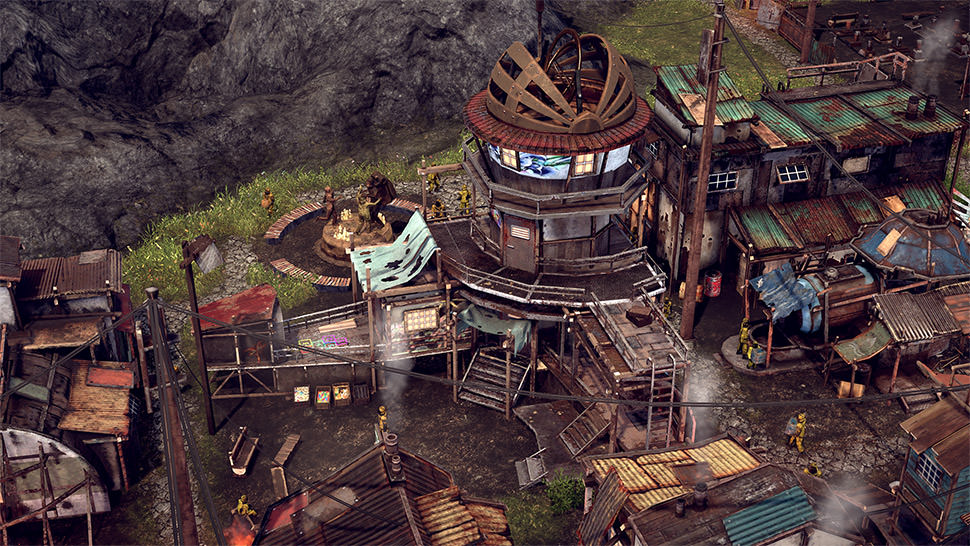
Once again, I'm blown away by how much layering there is within the game. You're a city planner, resource and workforce manager, and always worried about what the next radioactive rain will do to your poor inhabitants and crops. It just takes a bit to get through the learning curve and understand the longer-term impacts of your poor planning on sticking housing in the wrong spot and making your people travel long distances to get water.
Ugh.
But seriously, the game looks great in its current build, and while I am still working my way through understanding it, there are points where I've been able to sit back for a bit and just let it run. The interface is well set up throughout, and after some trial and error, the keyboard + mouse combo works great. Throwing building plots out, assigning workers to tasks, or even just seeing the population's general thoughts is simple and easy. The game is also quick to point out if there's an issue somewhere, like low happiness factors or lack of materials, making it easy for you to jump in and manage accordingly.
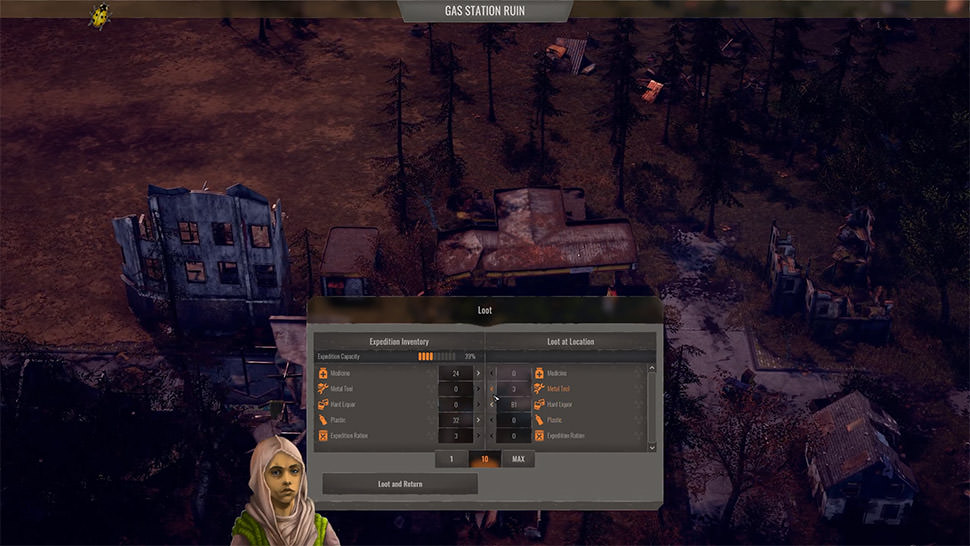
Simply Put
Endzone: A World Apart shows a ton of promise, especially for those looking for an in-depth city builder and simulation management game. There's a literal TON of ways to manage your settlement, depending on the map and game at hand. The world, a broken ruin of what was before, is ripe for your taking as you work to keep your settlement alive and growing amidst the debris. Endzone is a fun yet complex game. It reminds me of the old Settlers titles, where the game's complexities grow as you get further and further into the layers of what's contained within. But that is also potentially one of its failure points – the sheer volume of stuff to manage and control can be daunting, much like how it probably would be if we were to find ourselves in a similar scenario within real life.
]]>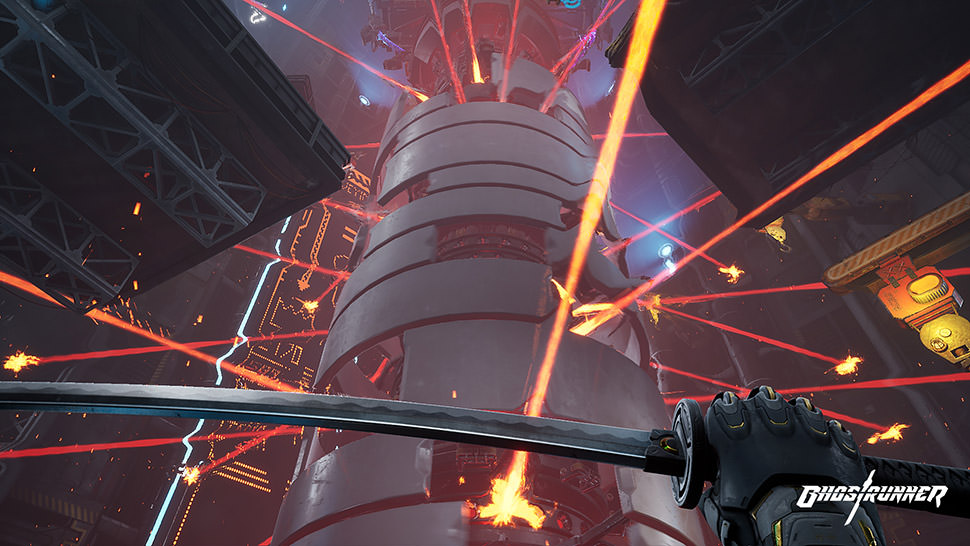
A challenging experience, Ghostrunner's fluid movement system demands quick decision-making and precise motions. Your katana easily cuts through most foes in a single strike, slicing bodies and appendages into chunks that can no longer threaten you. However, a single hit from enemies wielding everything from slow-firing pistols to giant energy shields and automatic weapons results in a critical failure. Checkpoints are generous, and restarts are instantaneous, so frustration only comes from your lack of skill and not from the game being unfair. Although playing on PlayStation 4 with a controller, the lack of accessibility options results in a tougher experience than those playing on PC with a mouse and keyboard. Across all 17 levels, I've lost count of how many times I've been forced to restart, but it is certainly well into the hundreds. Besides alternate control schemes that shift some control from the triggers and shoulder buttons to face buttons, there isn't anything to lower or ease the demanding skill threshold required.
The first ability you acquire, sensory boost, helps with dodging incoming projectiles, whether in mid-air or running across a surface. Time slows down to a crawl, giving you a couple of precious seconds to decide whether to burst forward or to the side to escape an attack and strike at your opponent. As you progress, new abilities and upgrades are unlocked, including a grappling hook to advance your mobility further and even the ability to shoot an energy wave from your sword, killing anything in your path. Outside of the combat scenarios, you'll be leaping across environments, wall-running across gaps, sliding through narrow openings, and jumping toward higher platforms. When everything comes together, and you smoothly jump, slide, deflect projectiles, wall-run, and slice through your enemies without hesitation, the game truly gives you the sensation of being a ninja.
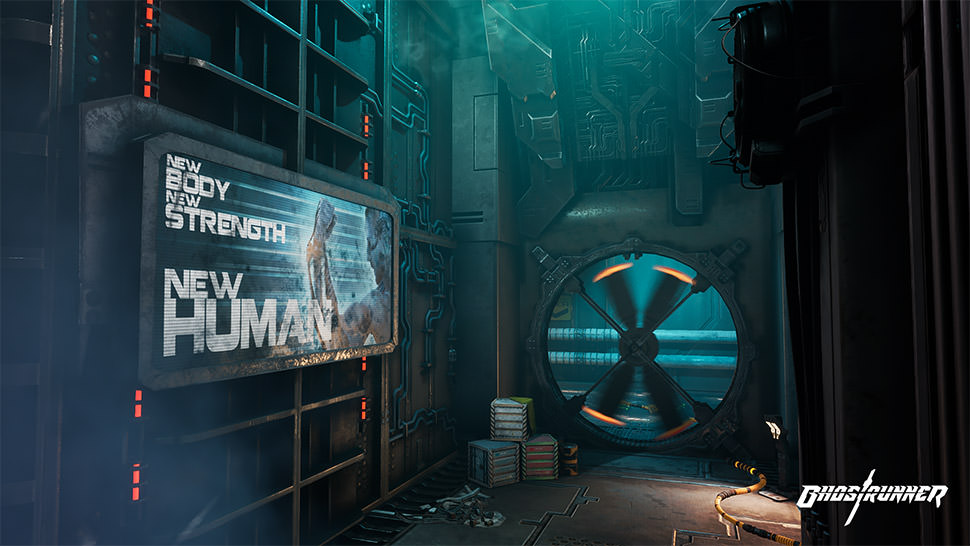
Exploration during platforming sections is rewarded with hidden collectibles, world-building lore, and additional cosmetic skins for your katana. These sections are relatively linear, with one perceived path forward, while the combat areas are designed to allow for experimentation, with player skill being a key factor. Do I risk a straight-on approach and dodge to the side at the last second to avoid getting hit? Should I wall-run around the room, taking care of each of the three enemies in a counter-clockwise pattern? These thoughts continually bounce around inside my head, and yet, you aren't given any time to decide. Stand still, and you'll probably be dead. Restart, and enemies are positioned back where they started, taunting you to learn from your failures.
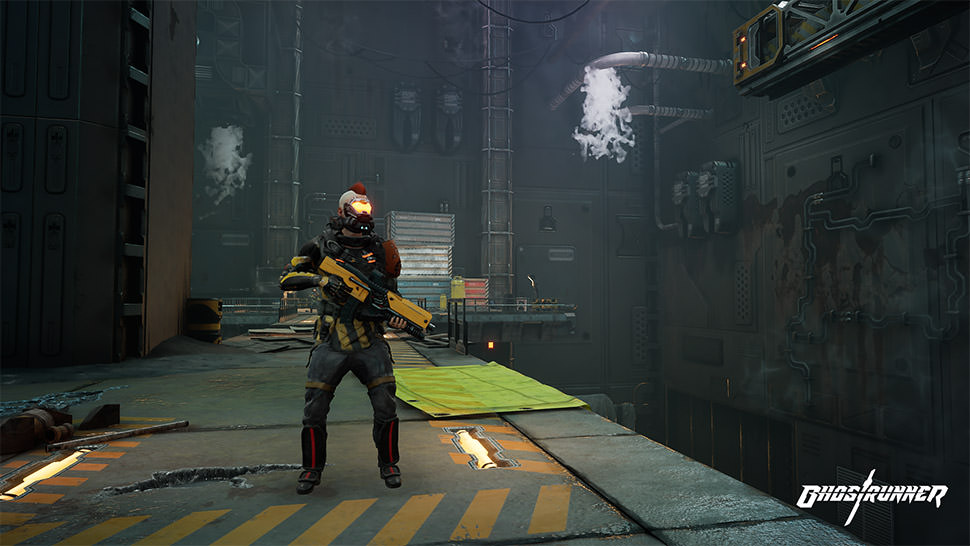
Being played in first-person, it's very easy to overshoot an enemy when boosting towards them or merely missing with your blade. Typically, this results in getting shot in the back as I try to reorient myself. It takes time to understand how far you'll travel when using the sensory boost, how to combine your other skills, and which ones are best used in each situation. With new unlocks and abilities being tied to progression, enemy strength keeps up with your growing gadgetry, ensuring the already taxing experience stays that way from start to finish. The aforementioned pistol-wielding foes are relatively standard but are quickly replaced with those that require specific tactics, such as only being able to be attacked from behind. Although you earn upgrades by playing, the game uses a limited space grid to place your chosen upgrades at any given moment. The better the upgrade, the more space it takes up, requiring you to play with these Tetris-like blocks to optimize their placement and maximize the space.
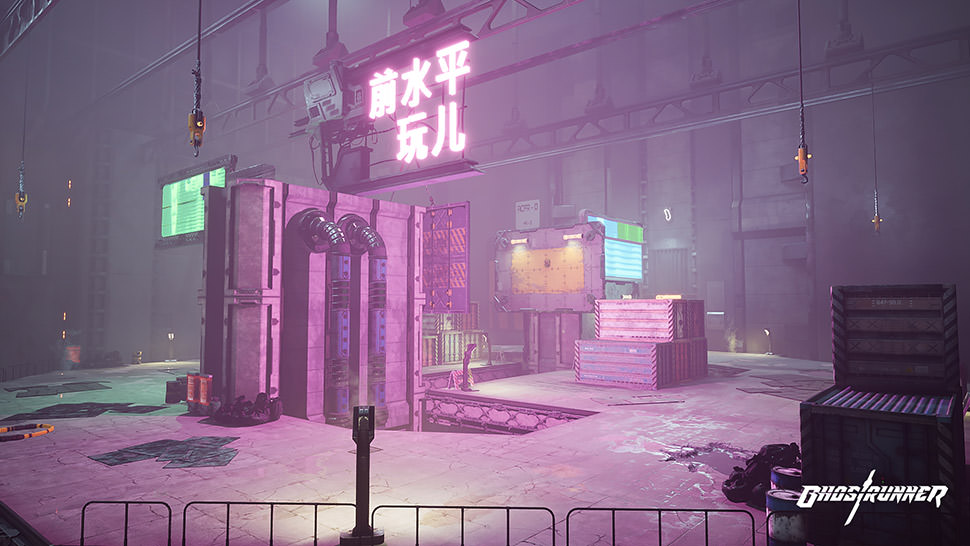
Simply Put
A demanding skill-based experience, Ghostrunner makes you feel like a cyberpunk ninja. Thanks to the quick restarts and generous checkpoints, the game never feels overwhelming or unfair. The 17 levels took me close to twelve hours to complete, though this will vary depending on your skill level. If you search around for collectibles during the platforming sections, it could be a shorter or longer experience. The enemy variety and ever-changing visual aesthetic for each area of The Tower keeps the game from feeling like a chore. The synthwave cyberpunk soundtrack by Daniel Deluxe fits perfectly with the impressively sharp visuals.
]]>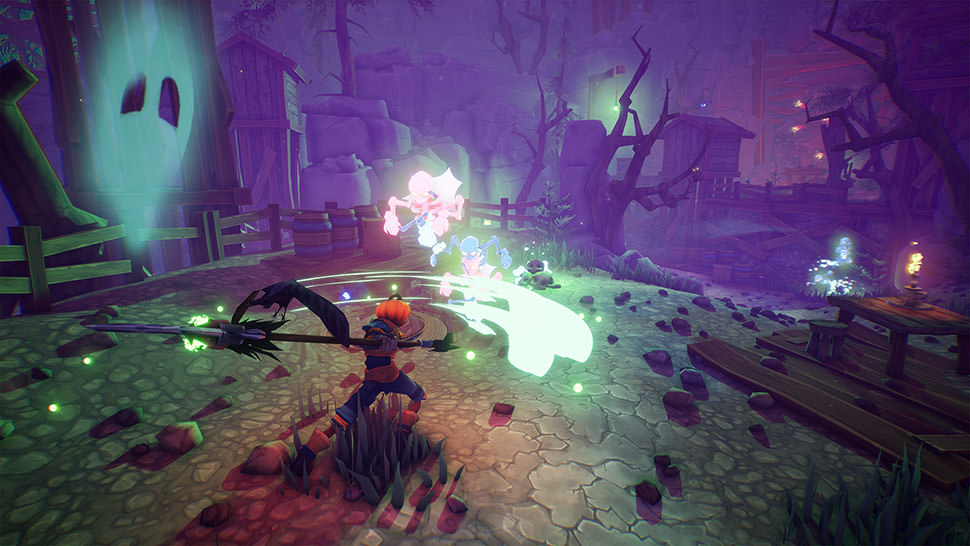
Although you are technically on the same evil side as the devil, the mindless demons roaming the Earth freely target you as if you were a pathetic, stinky human. Throughout the journey lasting six ghoulish levels, Pumpkin Jack is guided by a mysterious owl, which always has some wisdom for you, along with a bit of humor. There are twenty crow skulls to collect throughout, along with a single gramophone in each level. Looking at my recorded completion times, it takes anywhere from 30-45 minutes per level your first time through. When going through a second or third time to snag any missing collectibles, you don't need to finish the level and can freely quit to the main menu. There's no indication of where the missing items are located, so you'll need to scour every inch from beginning to end. The skulls are spent in a shop to unlock six additional skins, including an inspector, cowboy, and samurai outfit. As you continue your search for the wizard, you'll journey through a haunted cemetery, search for Jack's earthly grave, traverse a nefariously cursed swamp, and explore more decrepit locales. On Xbox One X, the game's visuals look great. The cartoony stylized approach is rich with colors that pop, bringing the entire adventure to life and making each level genuinely unique.
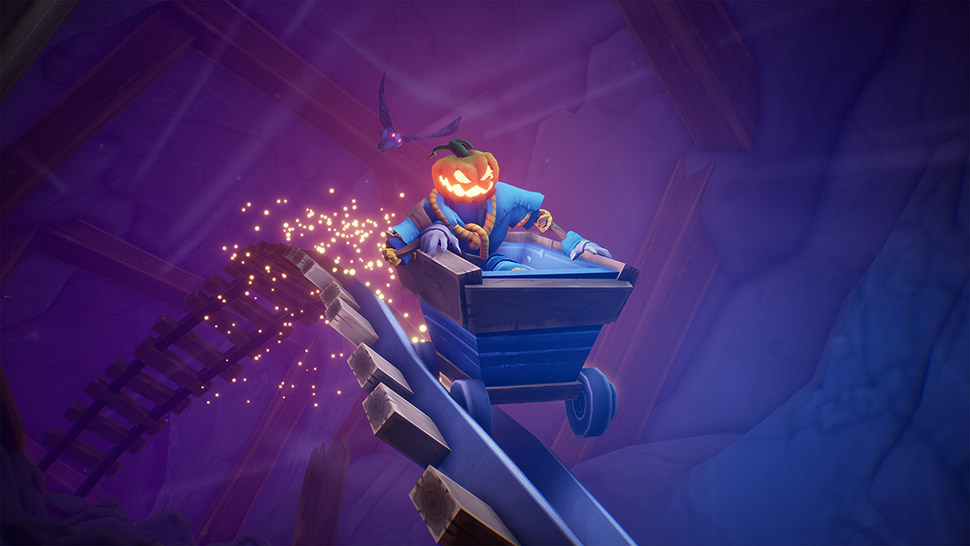
The combat mechanics are reasonably simplistic (not that it's bad), allowing for basic combo attacks, jumping, and dodging. Although you have a health bar, enemies do not, perishing in only a few hits, but they tend to have multiple attack patterns to learn. Basic skeletons will first shoot a homing green orb towards you at range before charging in with a melee weapon. Regrettably, it can easily be mistaken for the healing orbs gained from defeated enemies and broken crates. Your companion crow can be sent out as an additional attack, especially at long range. You may start with a shovel, but you'll gain new equipment after each boss is defeated, including a powerful shotgun, a long spear to keep your enemies away, and a deadly scythe. Bosses are massive, immune to your basic attacks, requiring you to memorize patterns and use all your tools and precision timing to defeat them.
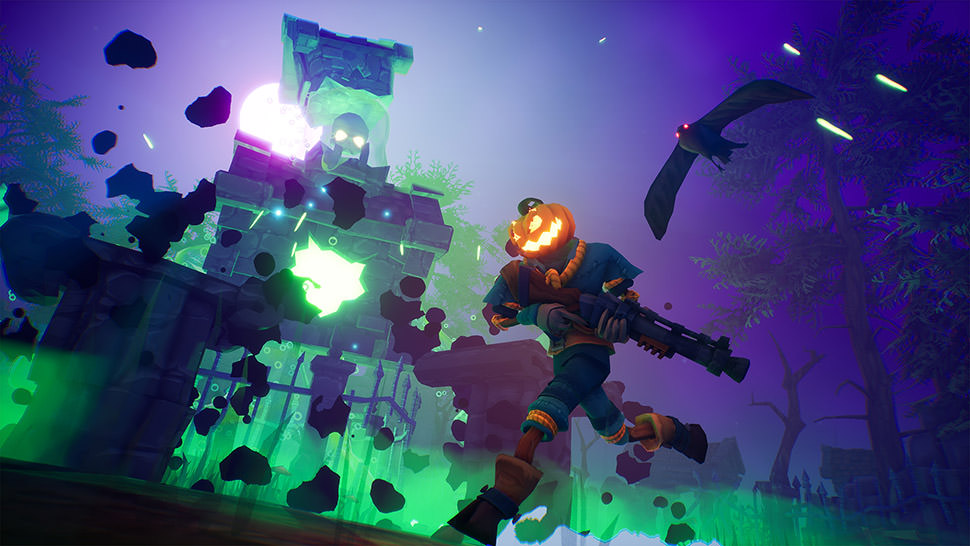
Environmental puzzles see you detach your pumpkin head from your body to solve enclosed sections. How does a pumpkin, or jack-o'-lantern in this case, move, you may ask? Well, through the devil's powers, you have tentacle-like roots growing out of your body, serving as functional appendages. Just like in your full body form, you are capable of a double jump, along with a spin attack. You'll be tasked with activating levers, playing a match game with gravestones, and pushing bombs into position to open paths forward. Speaking of your double jump, it does take time to get used to the momentum you have while in the air. In Pumpkin Jack, your momentum still carries you in whatever direction you were moving. It's best used to reach further distances or new heights, and maybe you'll get lucky if you need to correct your positioning, but don't count on it. There is plenty of verticality in the game, requiring precision platforming across narrow or moving ledges. Be careful not to ignite lanterns next to crates, as the entire area will be engulfed in flames.
Simply Put
Pumpkin Jack isn't a long experience (roughly four to five hours) but is full of nostalgia for classic 3D platformers. It's a fun romp that hits all the notes you'd want from a Halloween release. It has colorful and detailed visuals, a fantastic soundtrack, throwback-style gameplay, and a few laughs. There are plenty of collectibles to find if you wish to hunt for achievements. Surprisingly, Pumpkin Jack is arguably a more robust release than the recently released remake of MediEvil.
]]>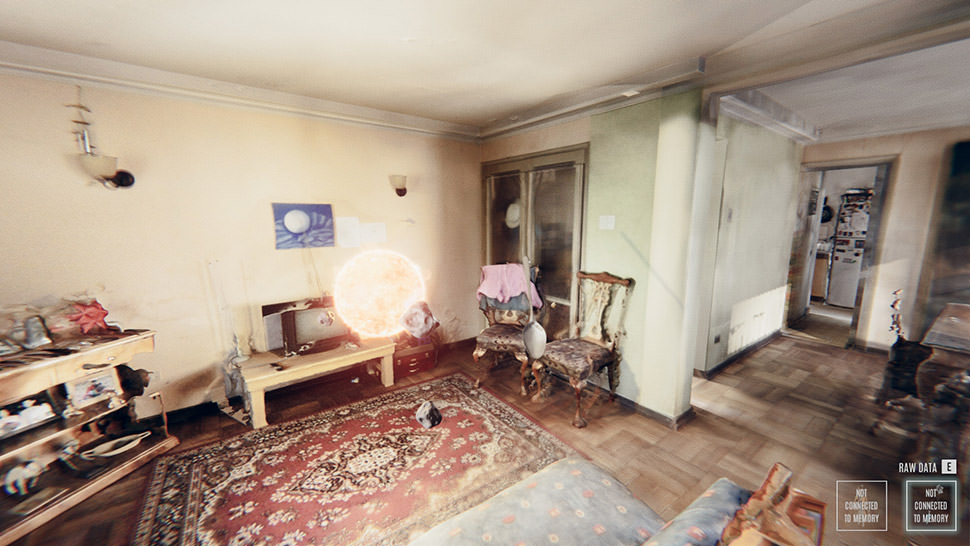
At the base point, you're a detective. I mean, you're not really a detective, but the game puts you into that corner. The vice president of the world's leading tech company dies. Thought to be suicide initially, and it falls to you to find out details surrounding her death, her dealings, and get to the root of what's going on. Your tools, aside from the regular Q&A you're able to do in the real world, is a powerful machine you've built called "The Dreamwalker," allowing you to enter the mindscapes of individuals through their brain scans. Within these environments, you will traverse the people's subjective and objective memories in question, delving into their perceptions and mentality like none before.
The most mind-blowing aspect of the game (to me) that I'm still thrilled to see is the mind's physical appearance. The way things are not fully detailed, yet intricate in how the mind is "perceiving" them is incredible. It reminds me of some studies done in imaging what a person's mind actually sees about images – it's distinct and easily made out what the object might be. Still, it's comprised of several just out of focus pixels. The mindscape honestly feels like one of the best parts of the game as well; traversing it feels like you're moving from one random thought to another, but through a conjoined point that seemingly makes them connect.
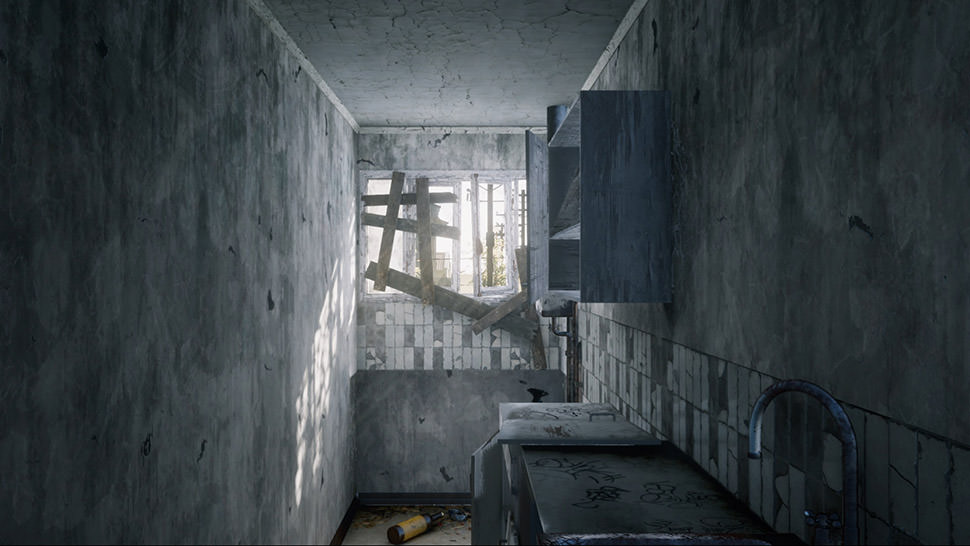
Promising no jump scares, it's interesting how well Playmestudio has managed to put together a tense, interactive experience. In the real world and the mindscape, some areas are creepy, concerning, and make you feel something is about to happen. It's a neat way of creating tension in a game that mostly amounts to a walking simulator and puzzle game. The puzzles themselves are usually benign and easy to figure out, given you play with everything in the environment. However, I enjoy "picking up" data fragments and manipulating them to help me figure out where they belong and ultimately help complete a memory.
The other neat aspect of the mind is the ability to jump between memories and then the subjective vs. objective view of them; remember subjective being how we feel regarding what we're experiencing. You'll have to jump between states and memories to find solutions and understand more about your subject's dynamics, death, and past, and how it all relates to the present day. Outside of the machine, the real world has a series of almost QTE events (mostly just picking a dialogue option) that determines how you're interacting with those around you. Your choices play into the eventual outcomes of the game and how the cards eventually fall.
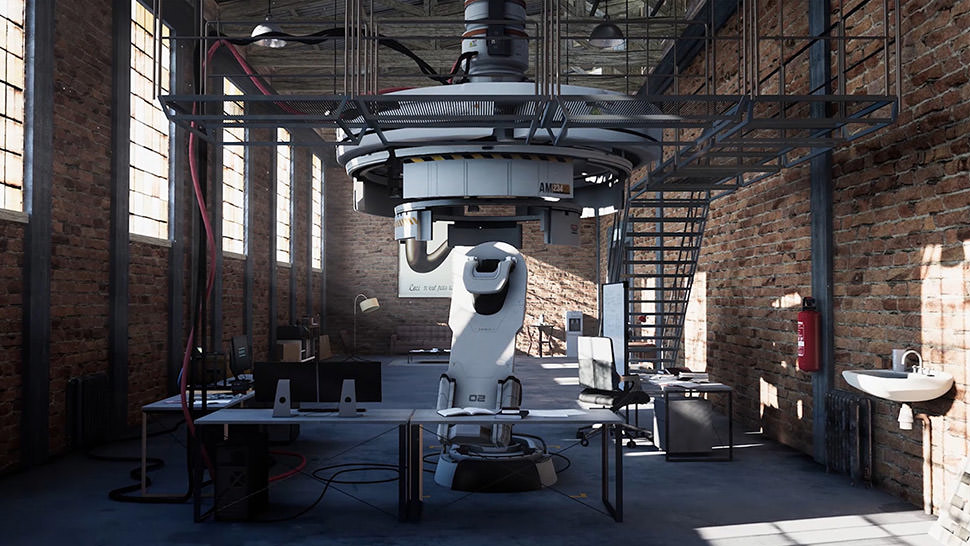
However, I don't understand why I feel so sluggish both in the real world and in the machine. Moving around to me is a pain, and while it's easy to interact with everything, I'll stop pressing WASD and glide a bit further than I wanted, or I'll shift over too much. Not a huge issue overall, but an annoyance that kept popping up in my playthrough.
Simply Put
The Signifier is a relatively solid interactive experience where you dive deeply into the ideas of self, psychology, technology, and the eventually marrying of the two and the potential ramifications. The mindscape, and some of the creepy factors within, are the best parts of the game and something I recommend anyone see at least once, given how it's presented. But, I also wonder if there's enough meat to the average gamer. It's an intriguing enough story with some twists, but there's only so much to do.
]]>